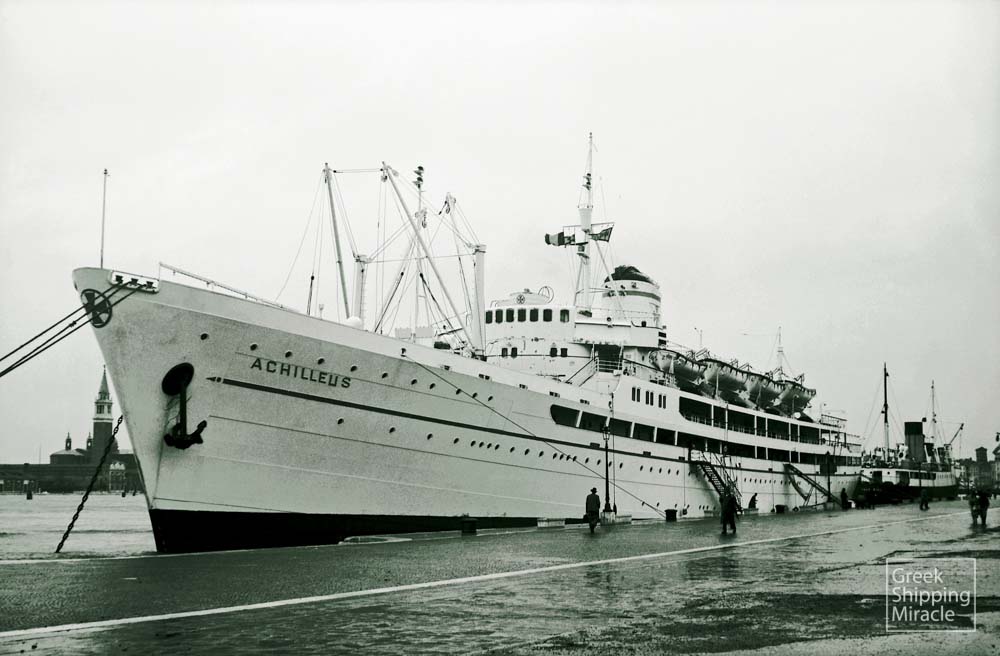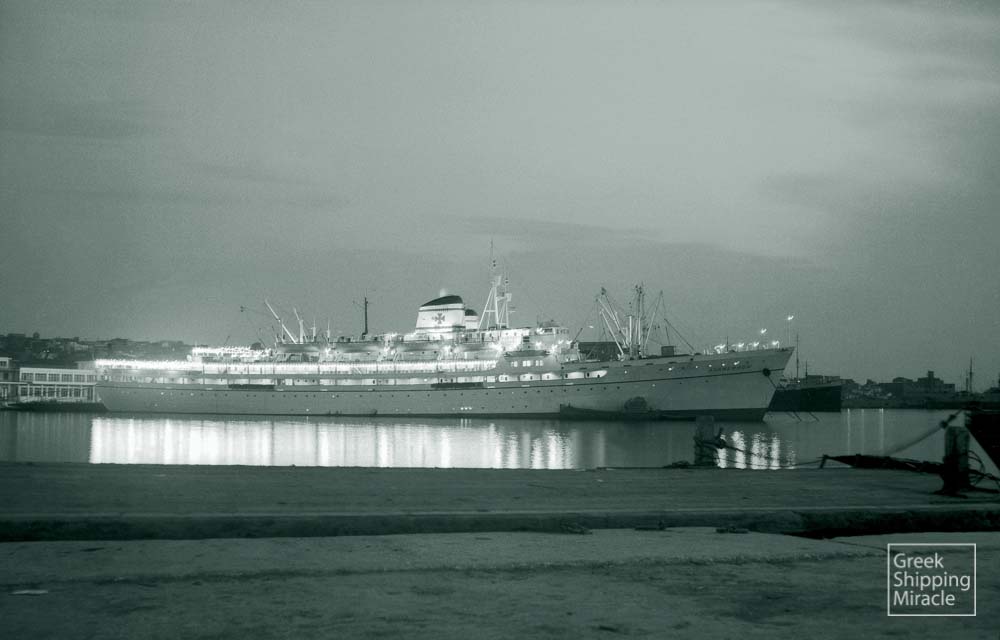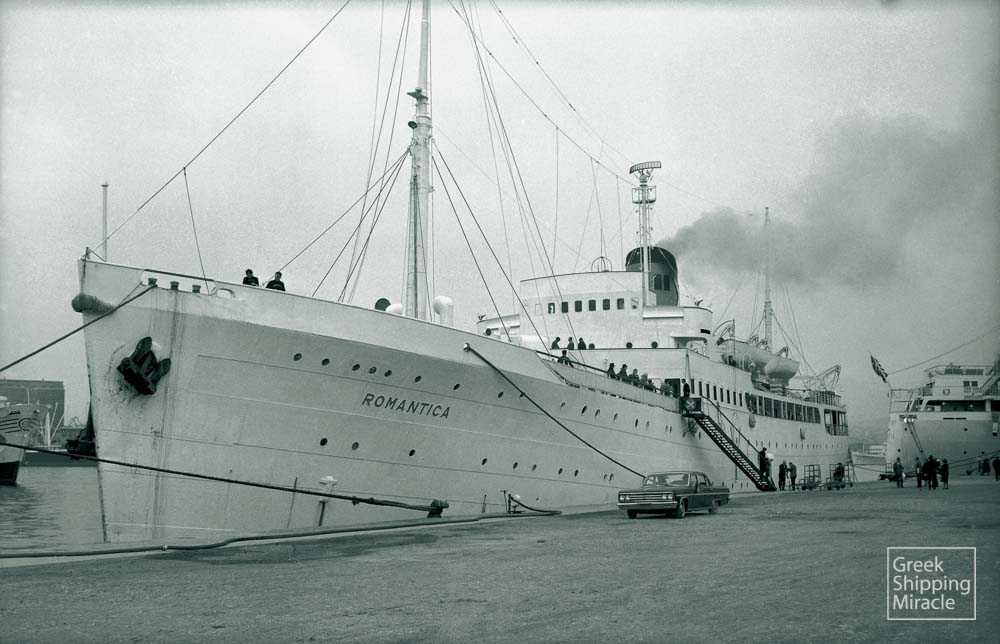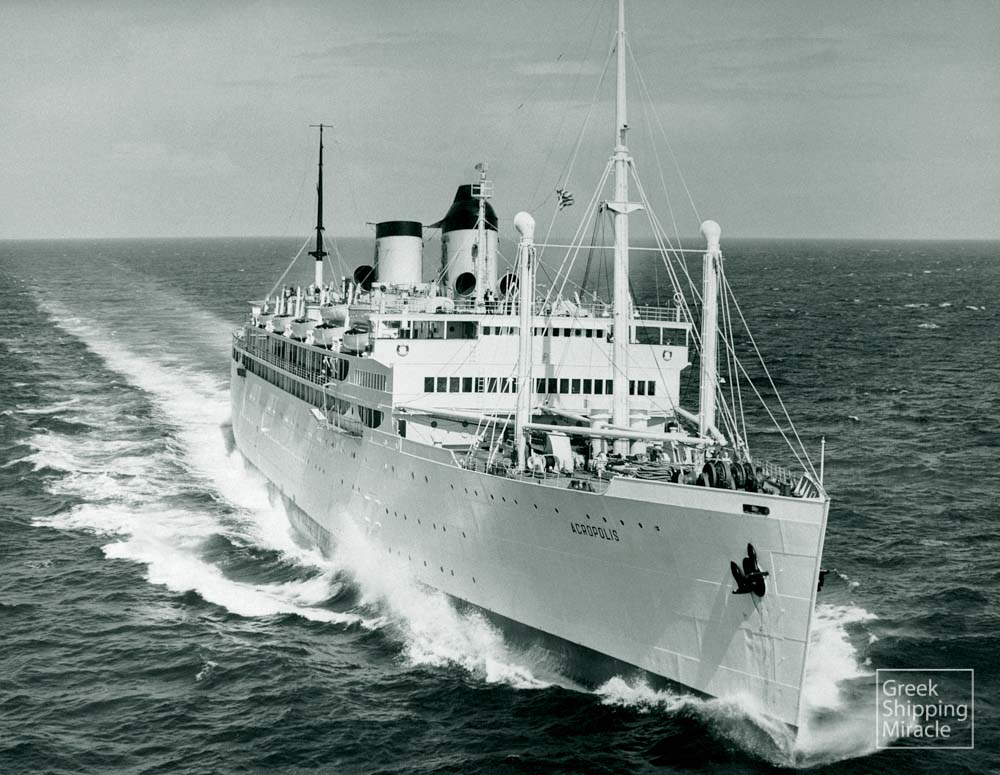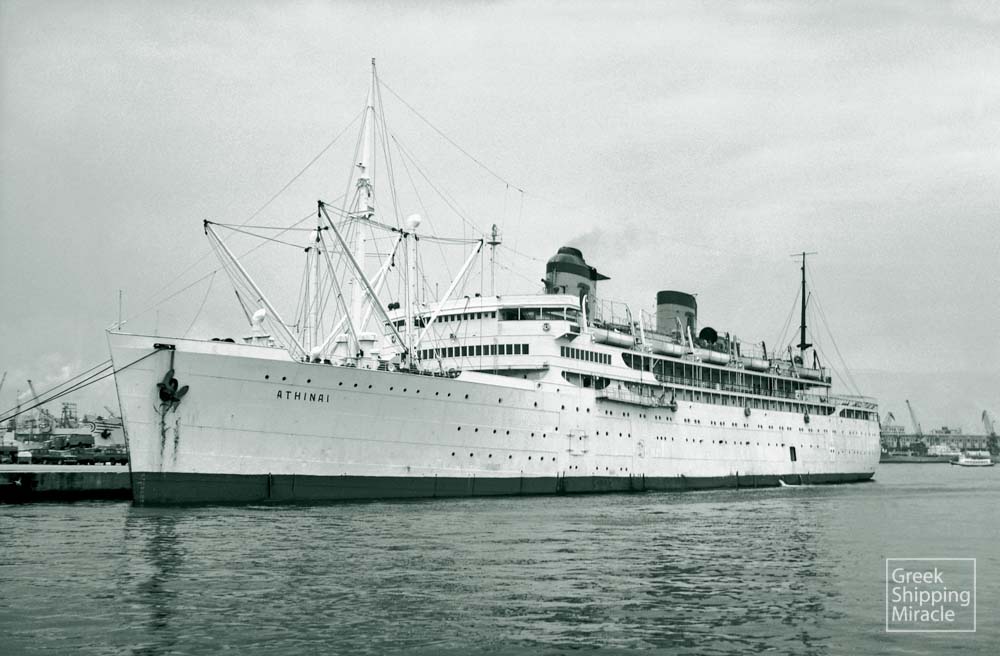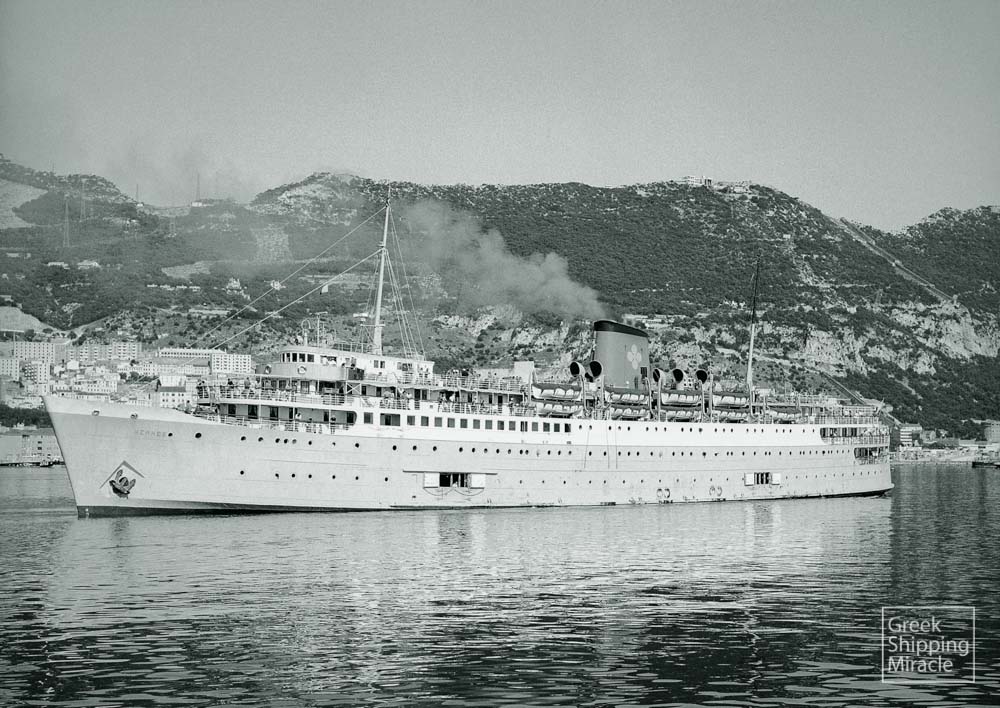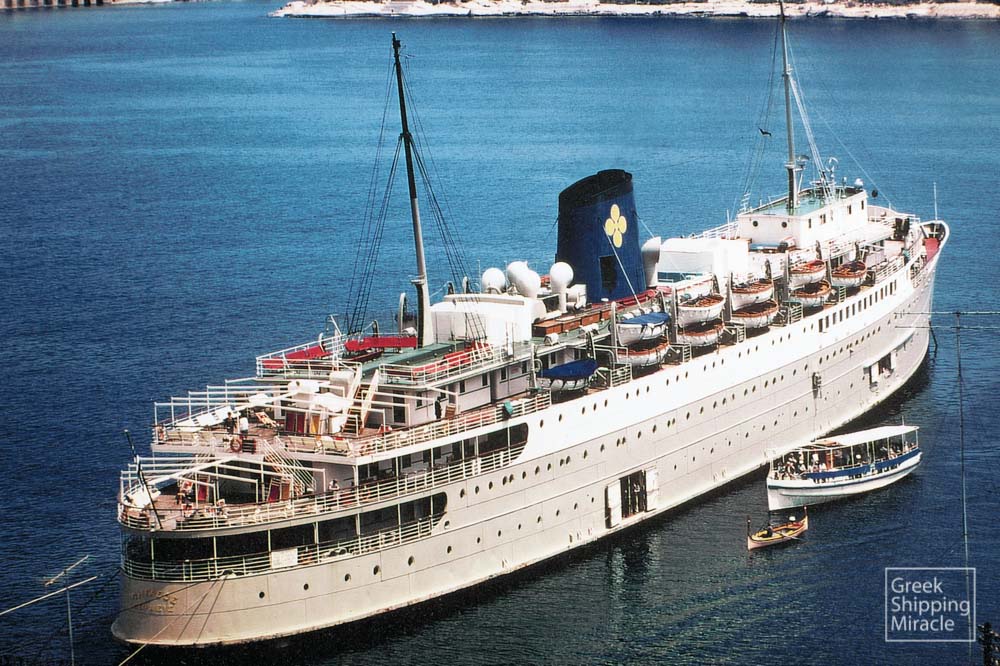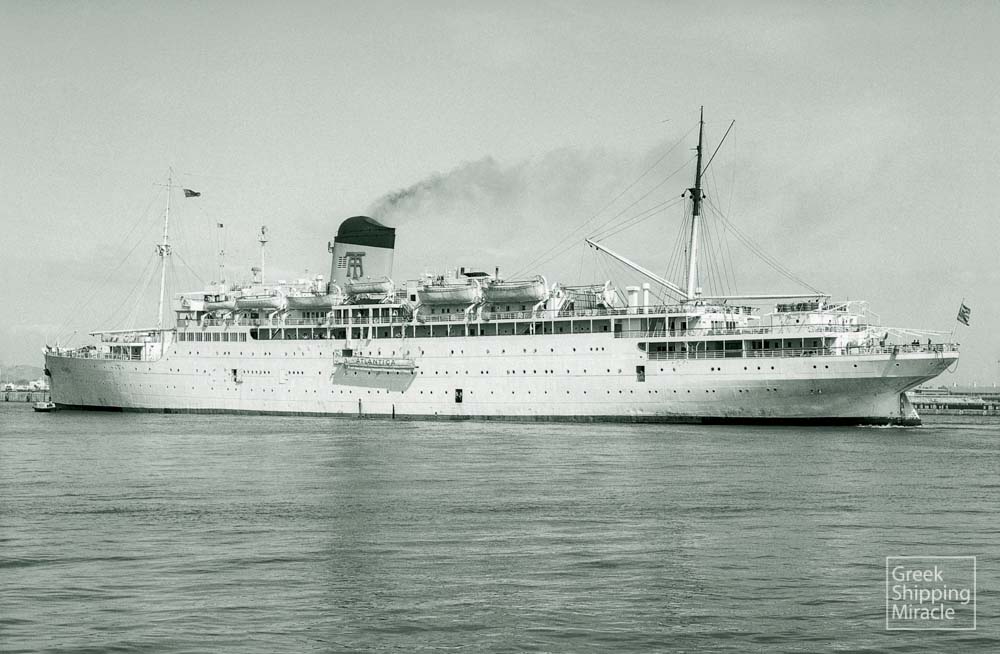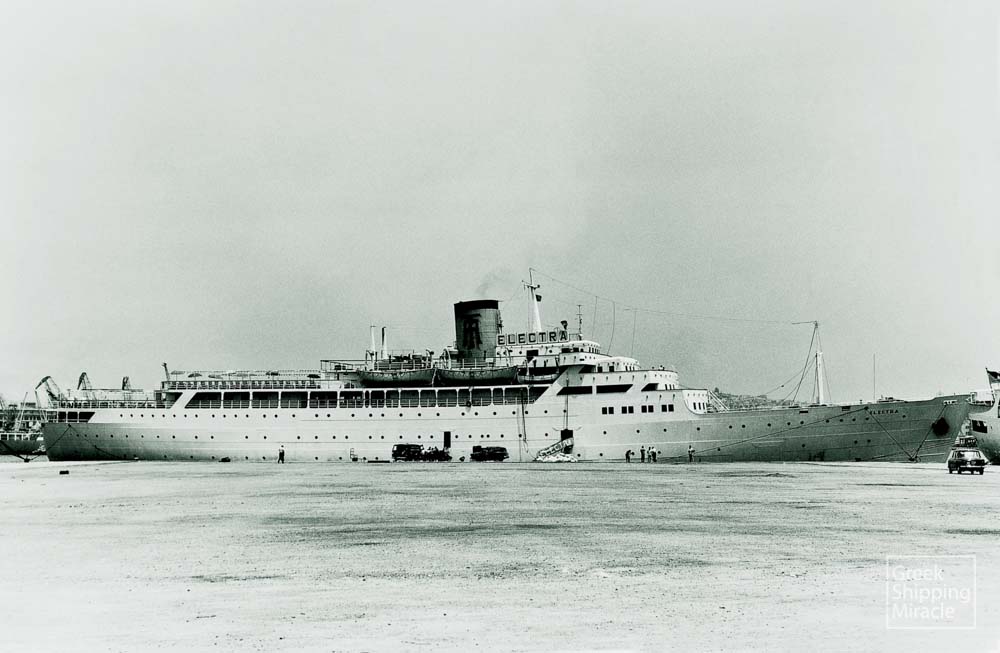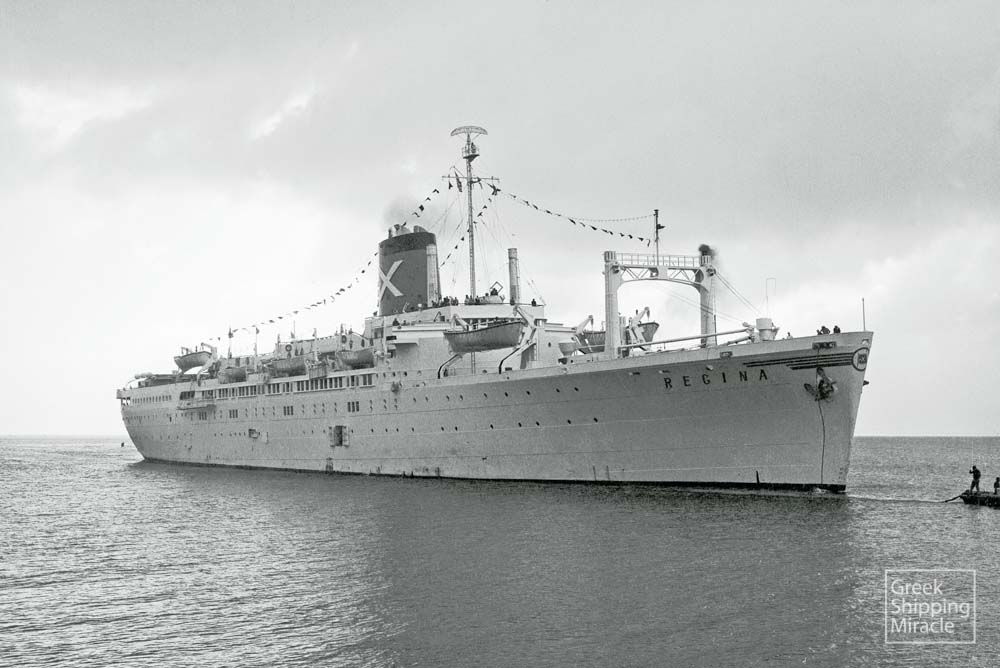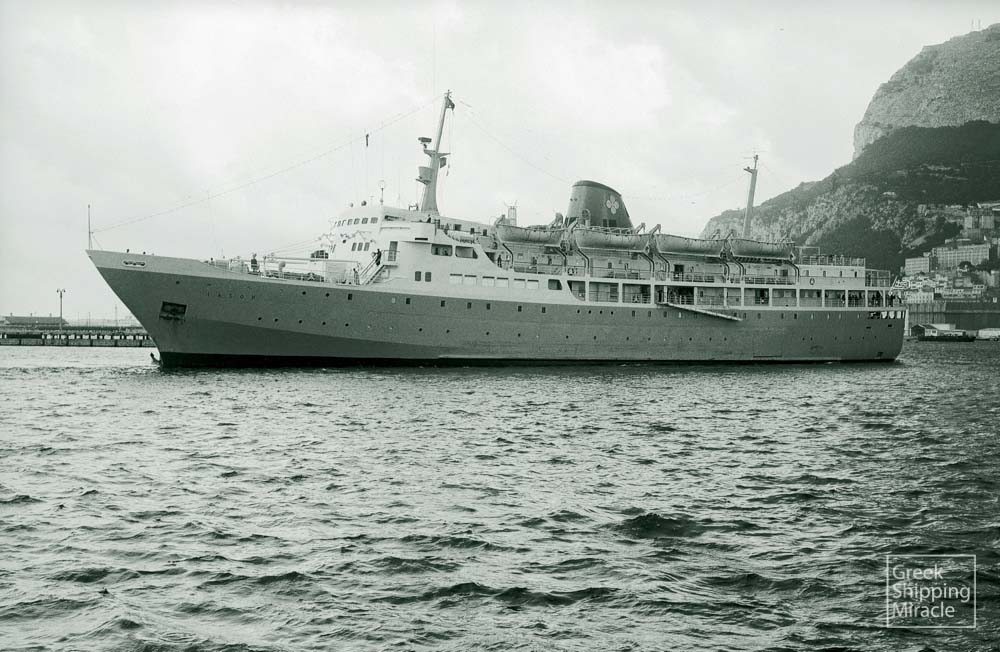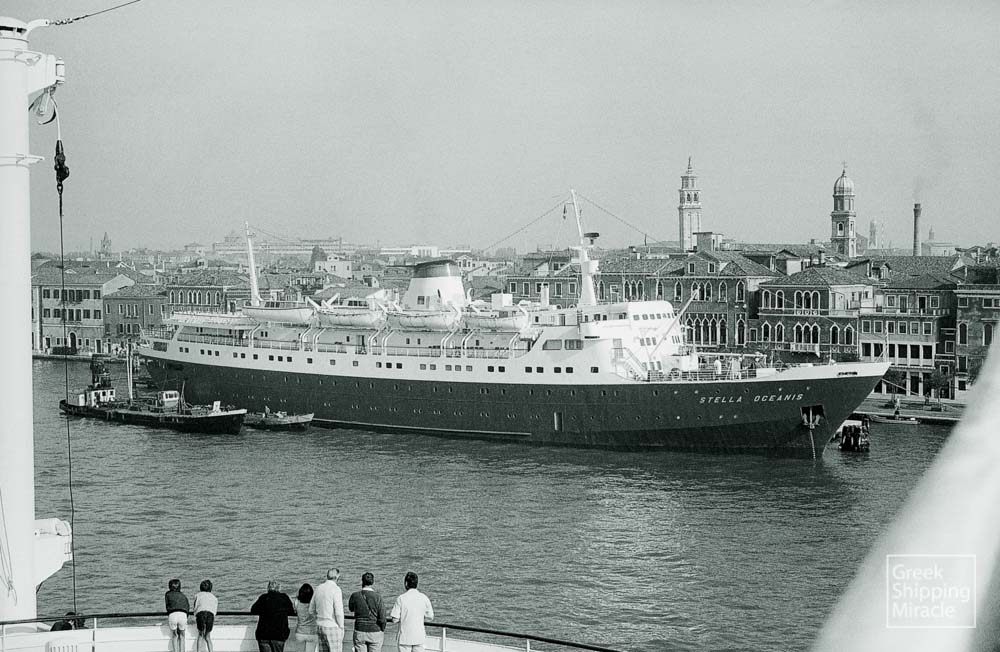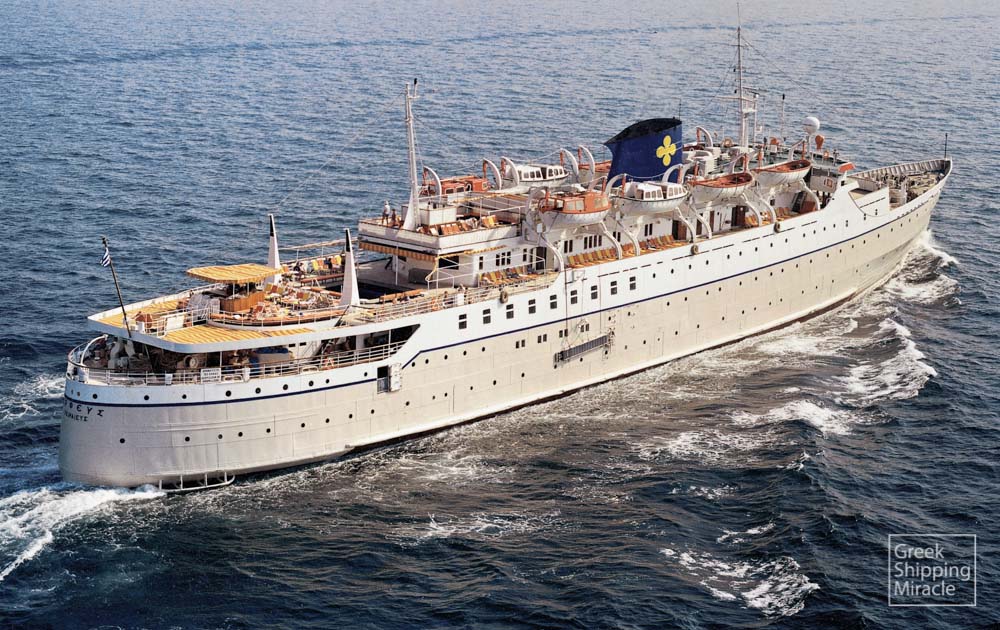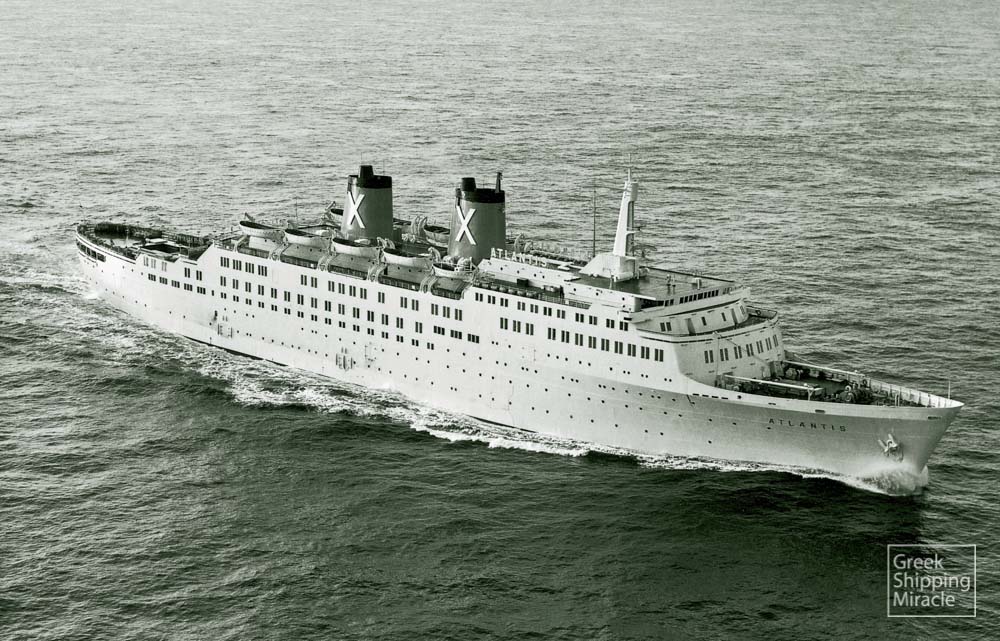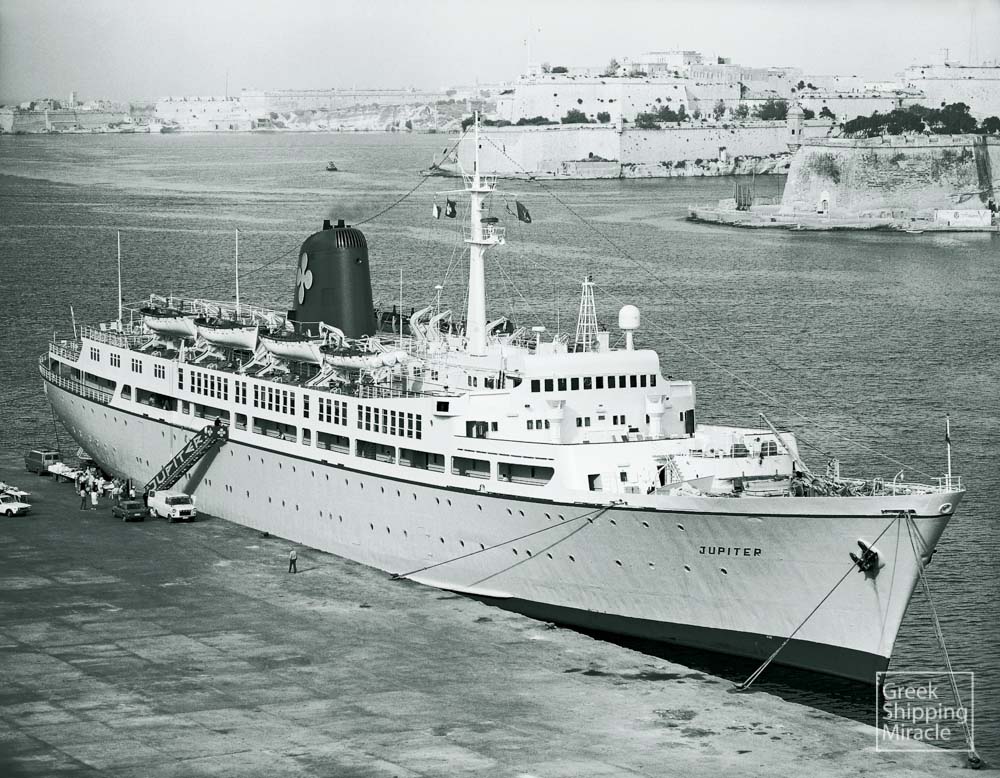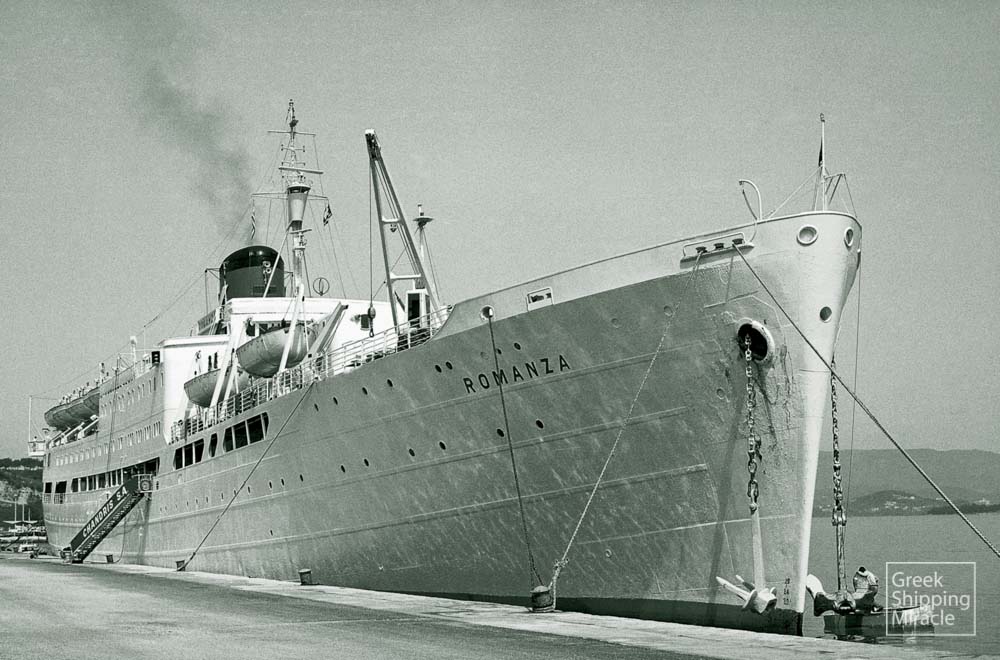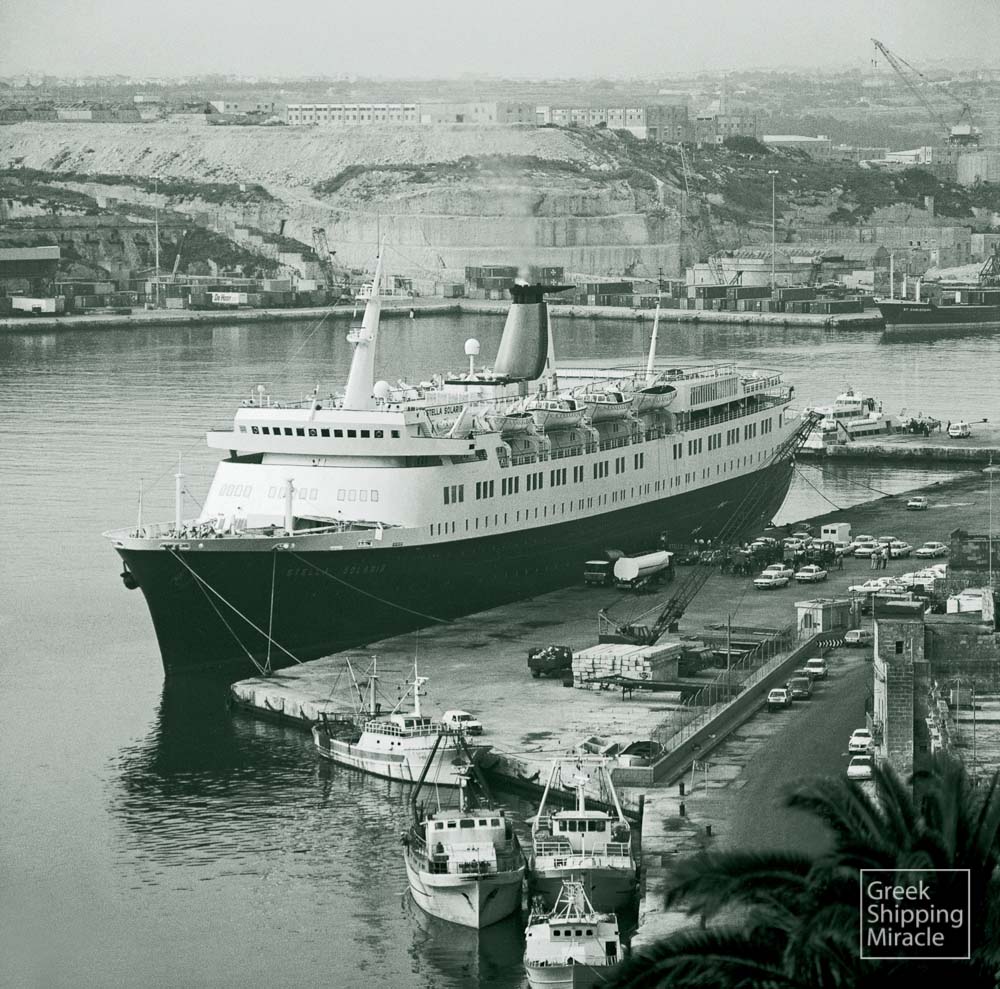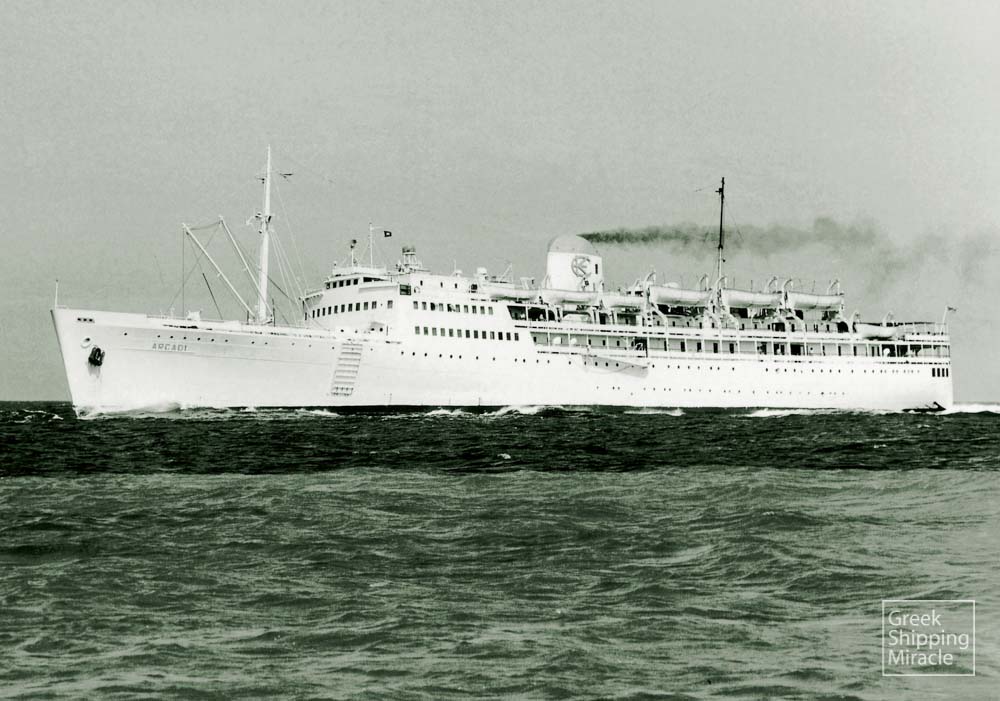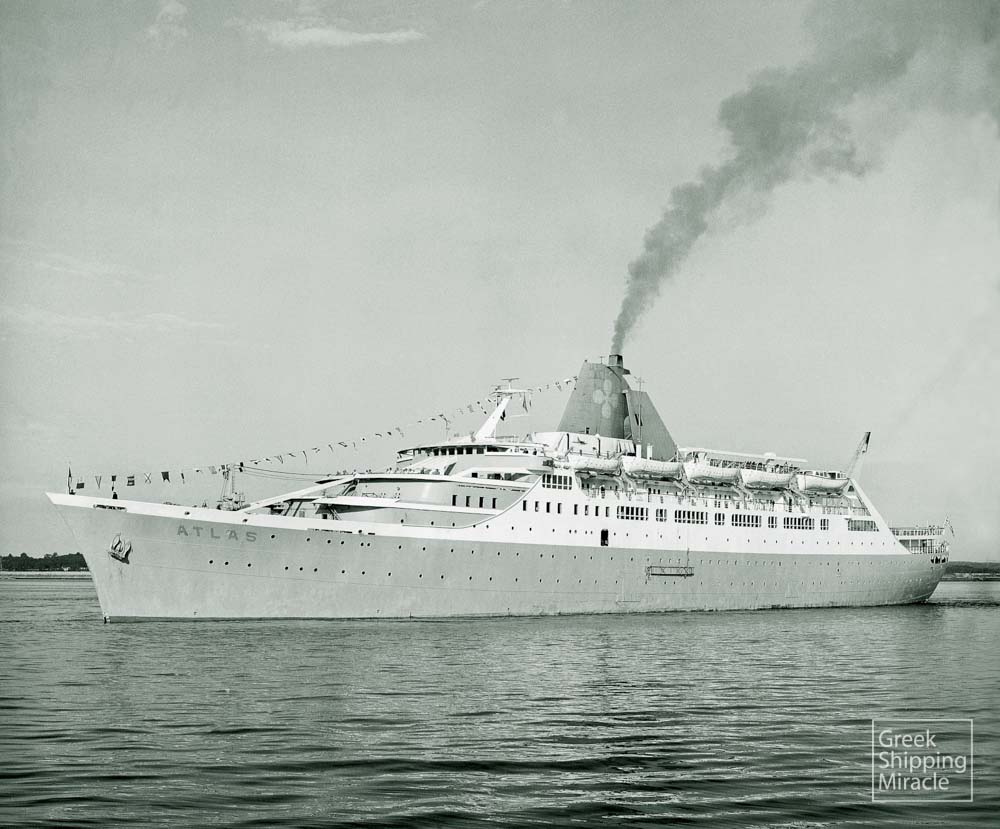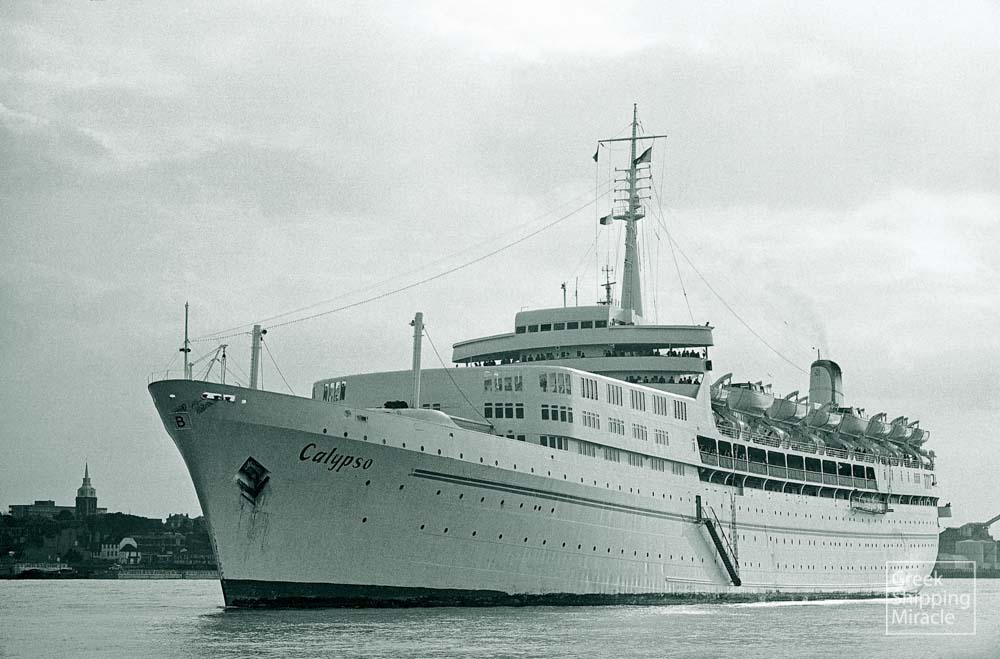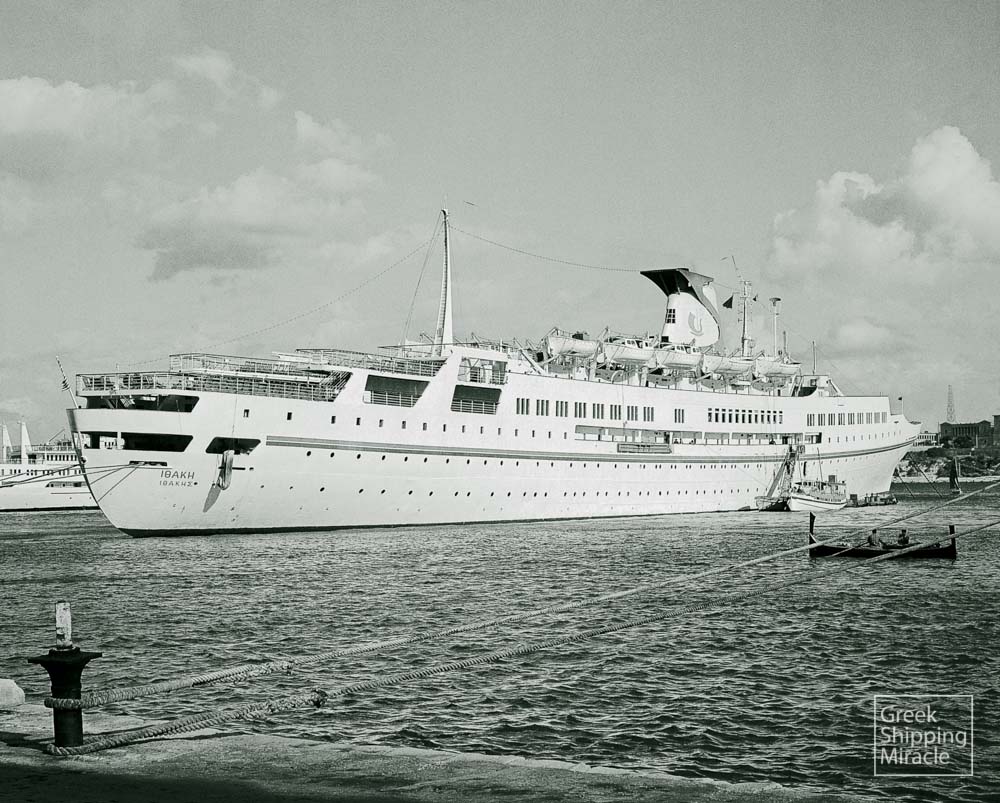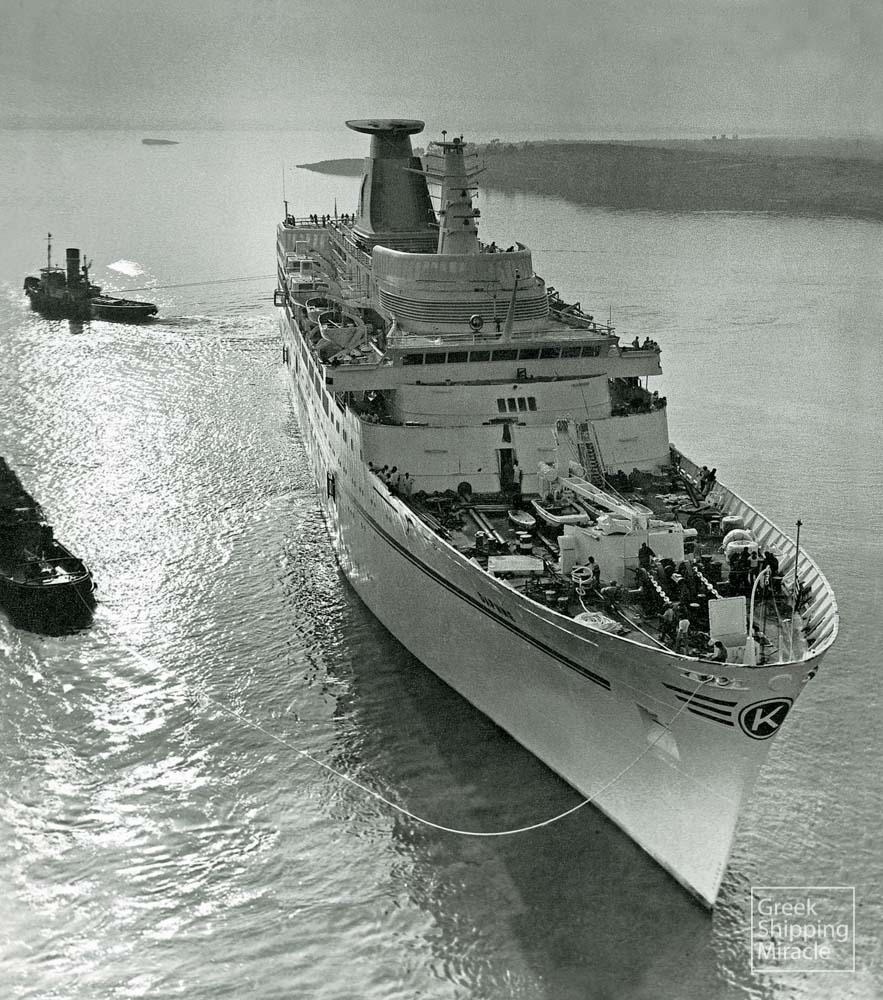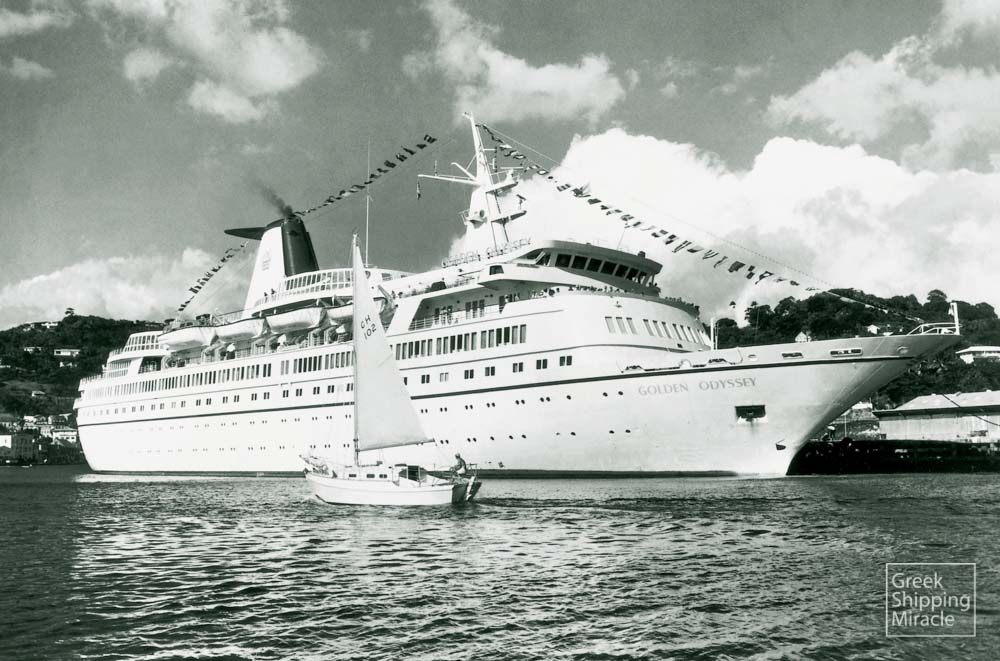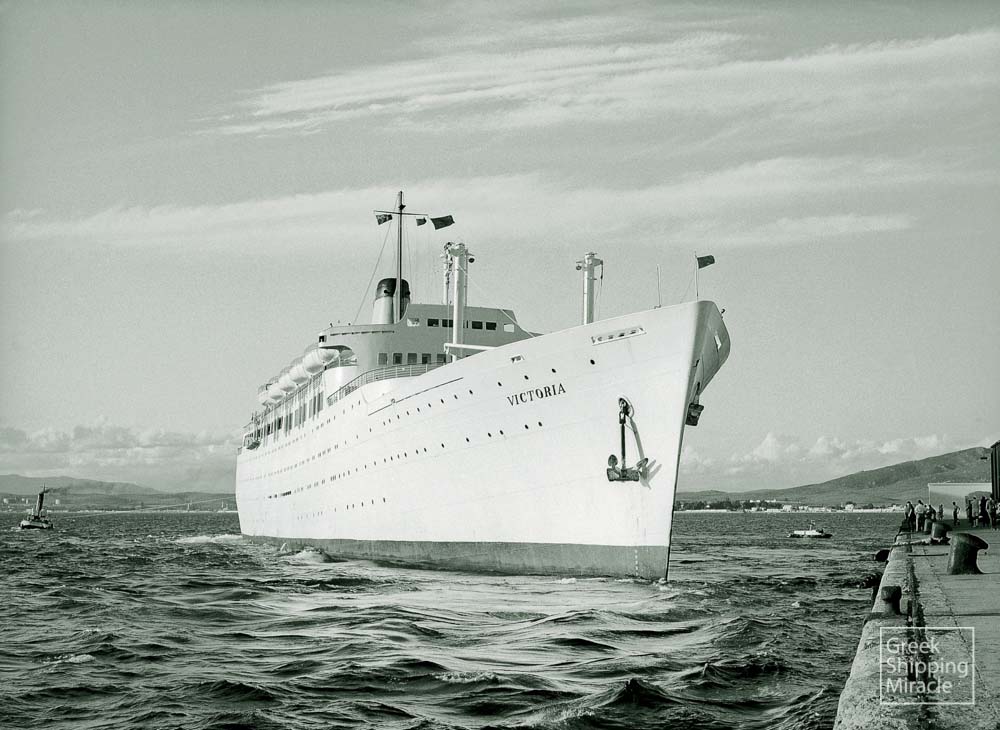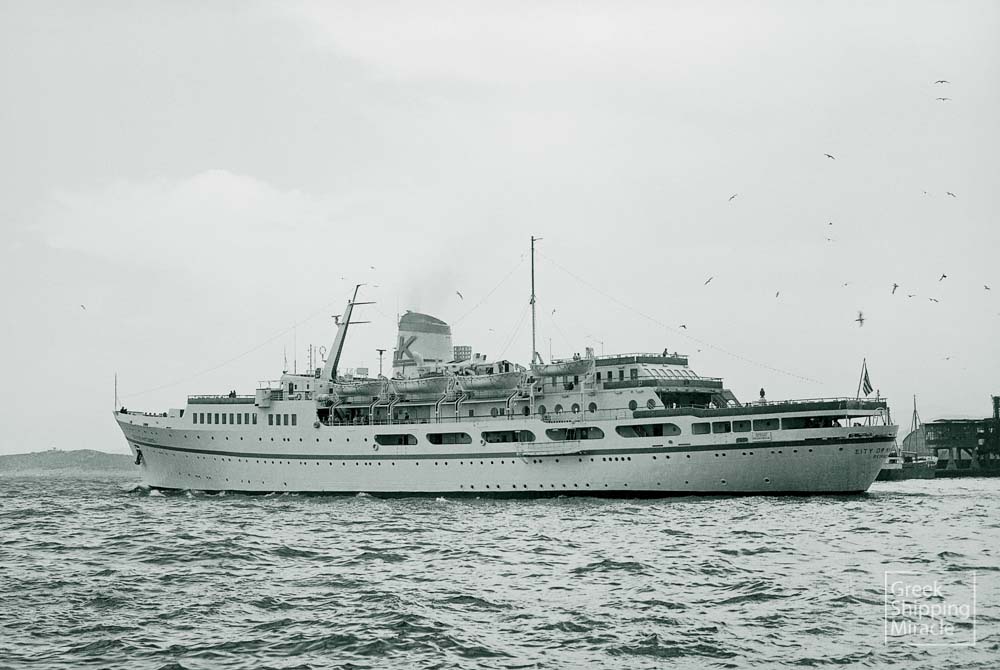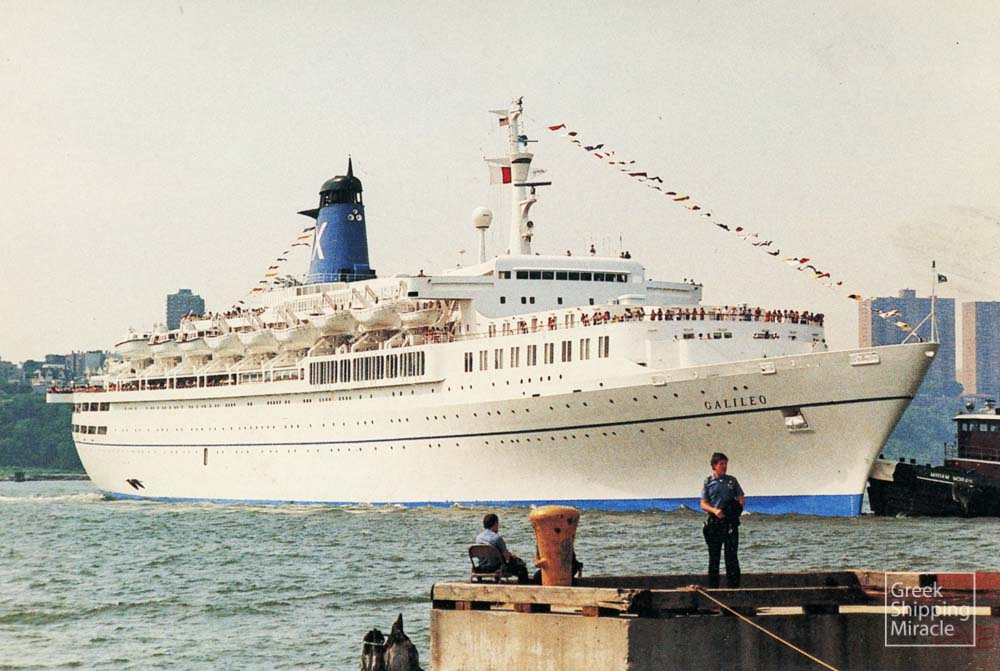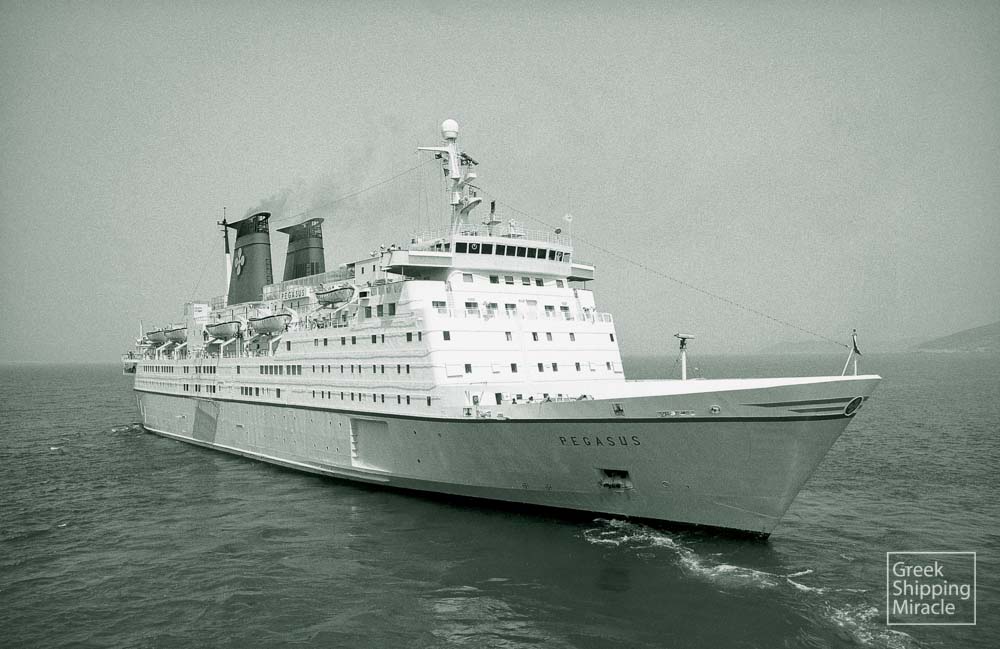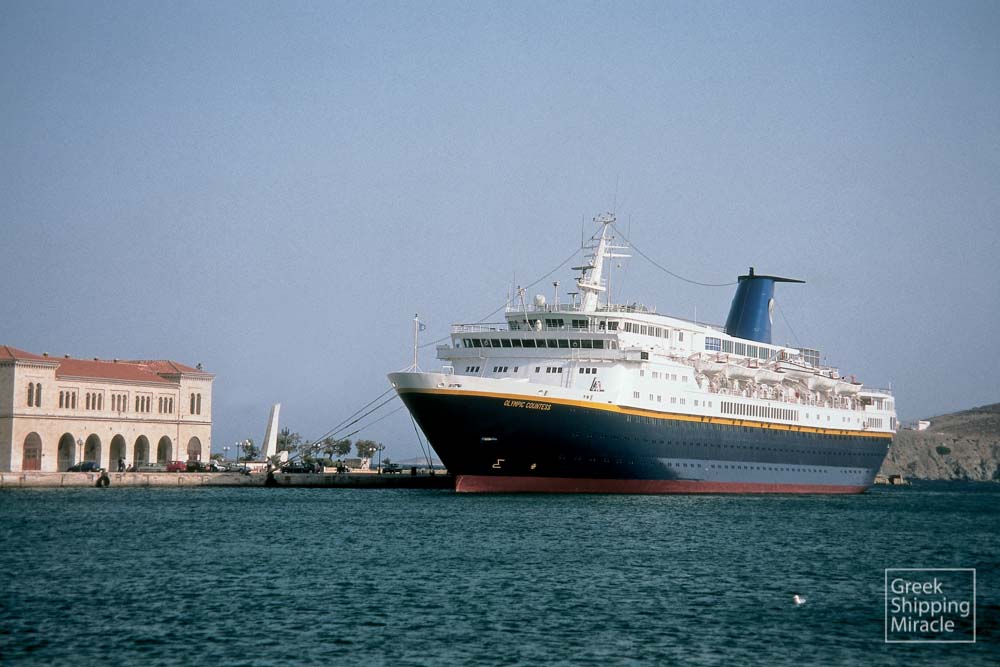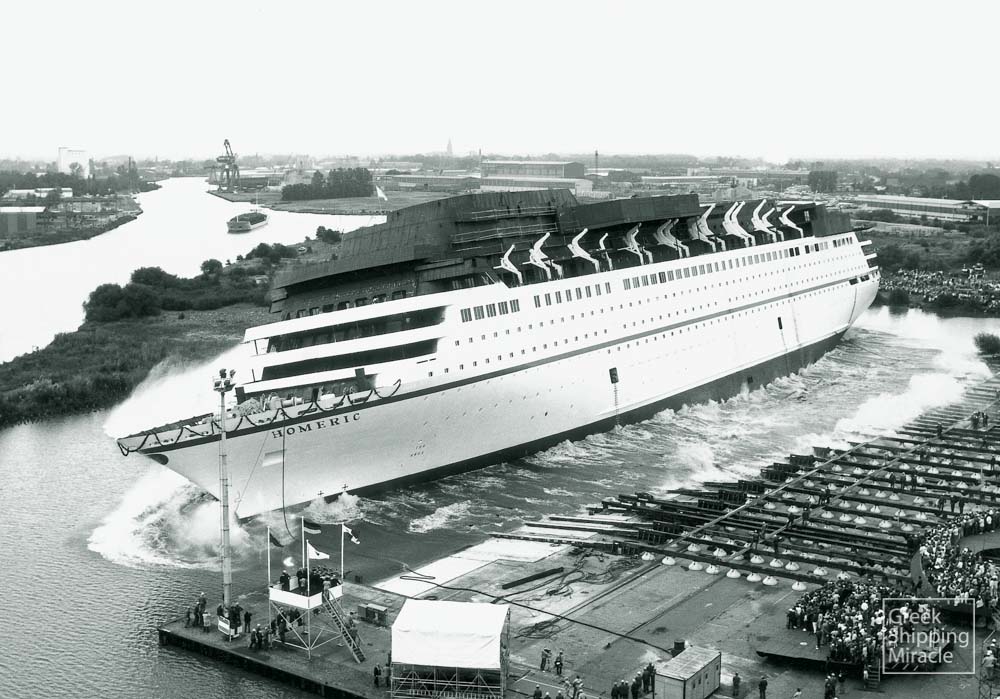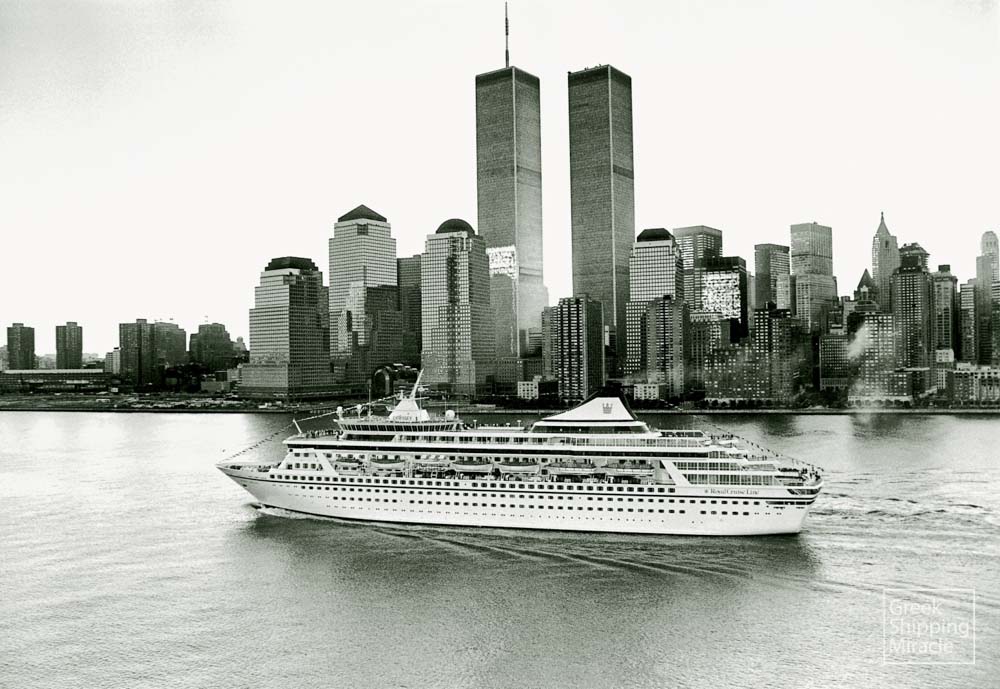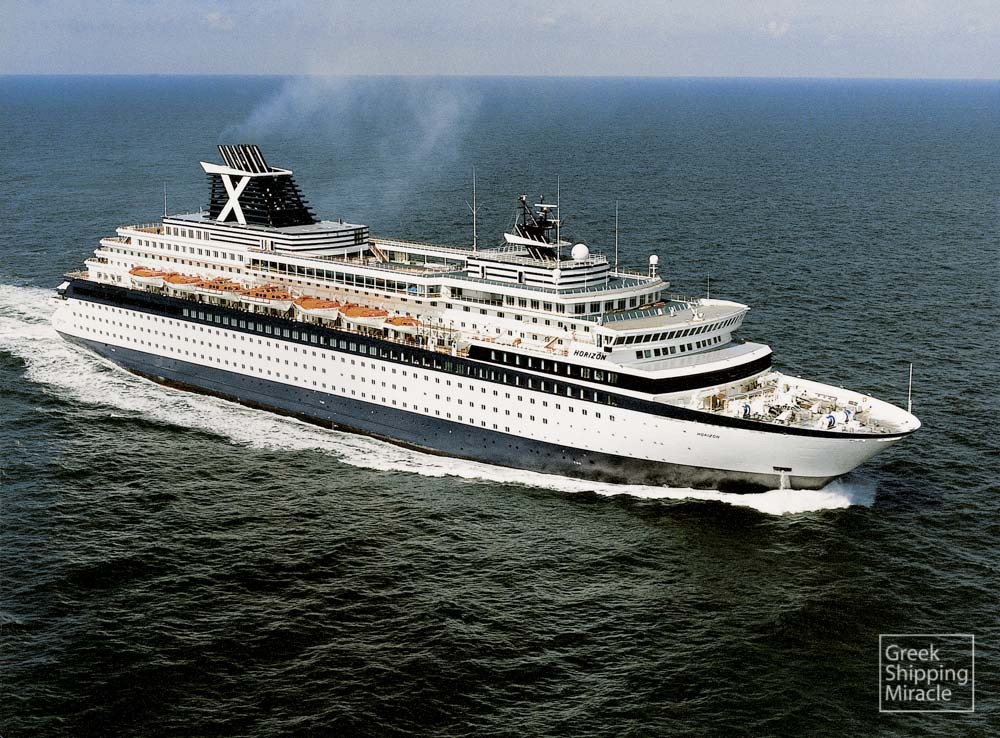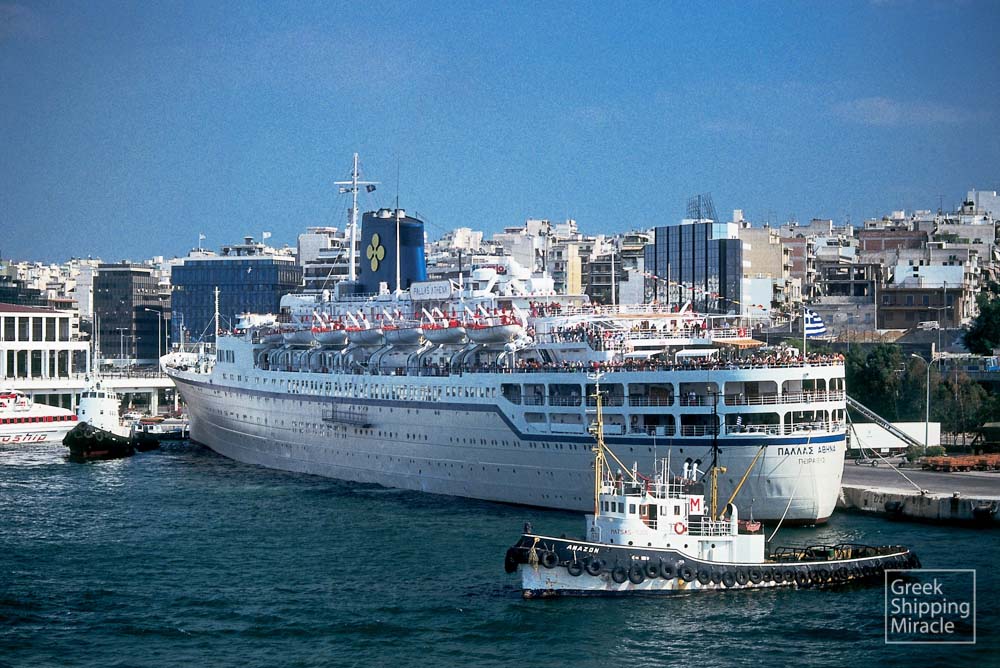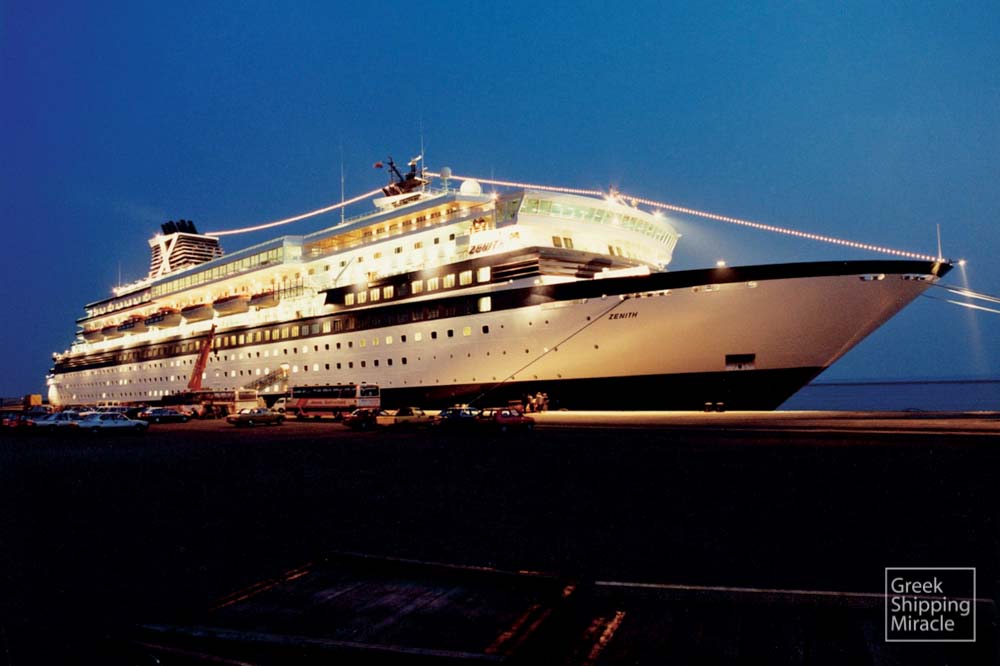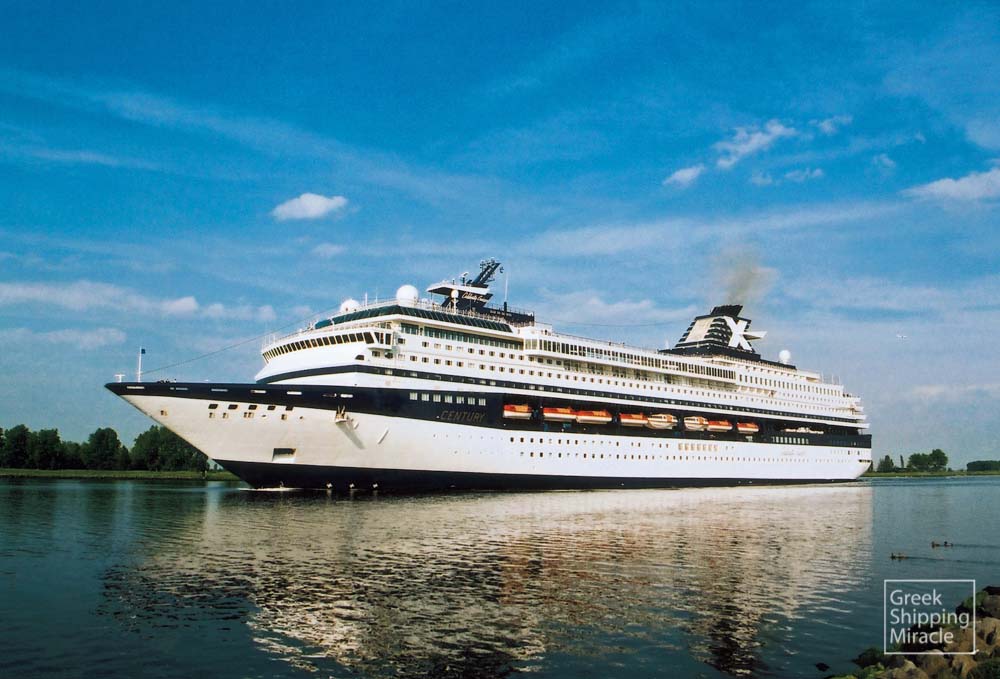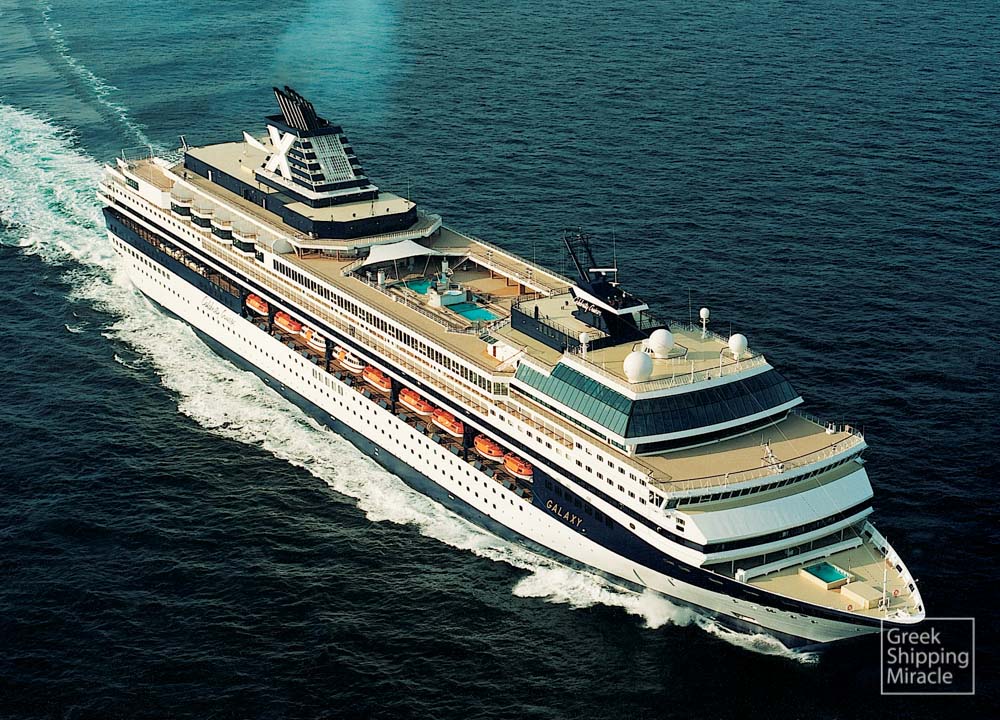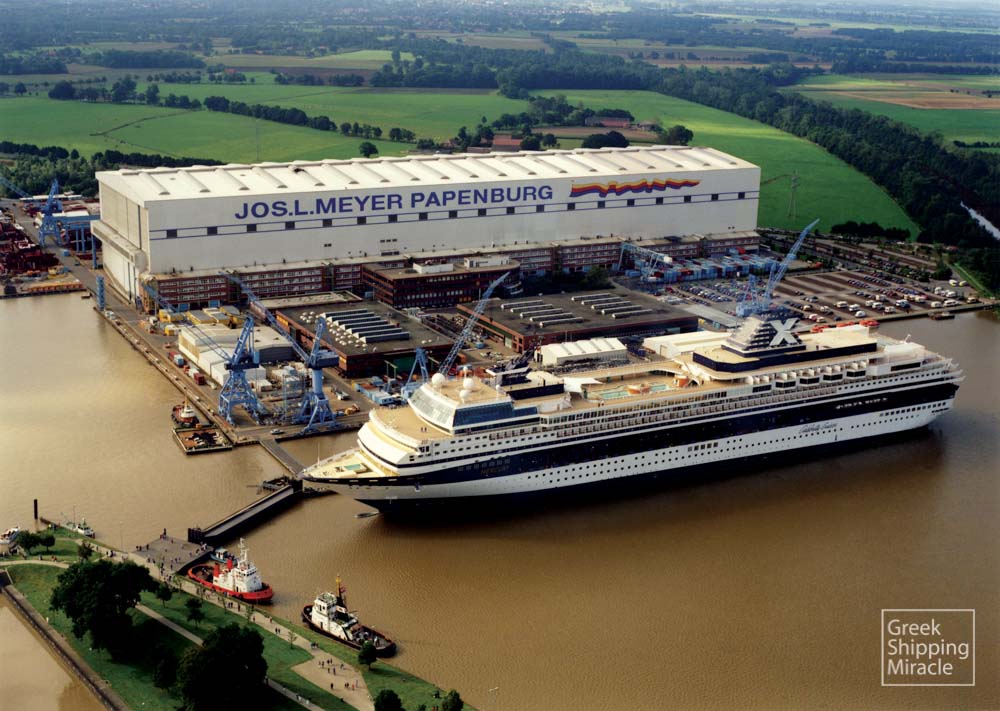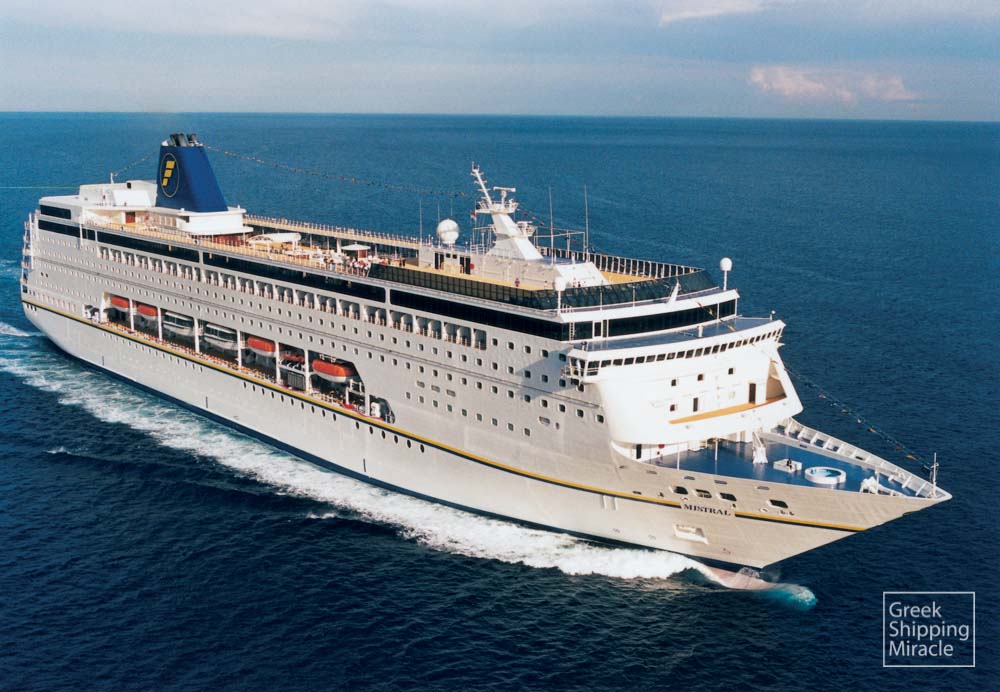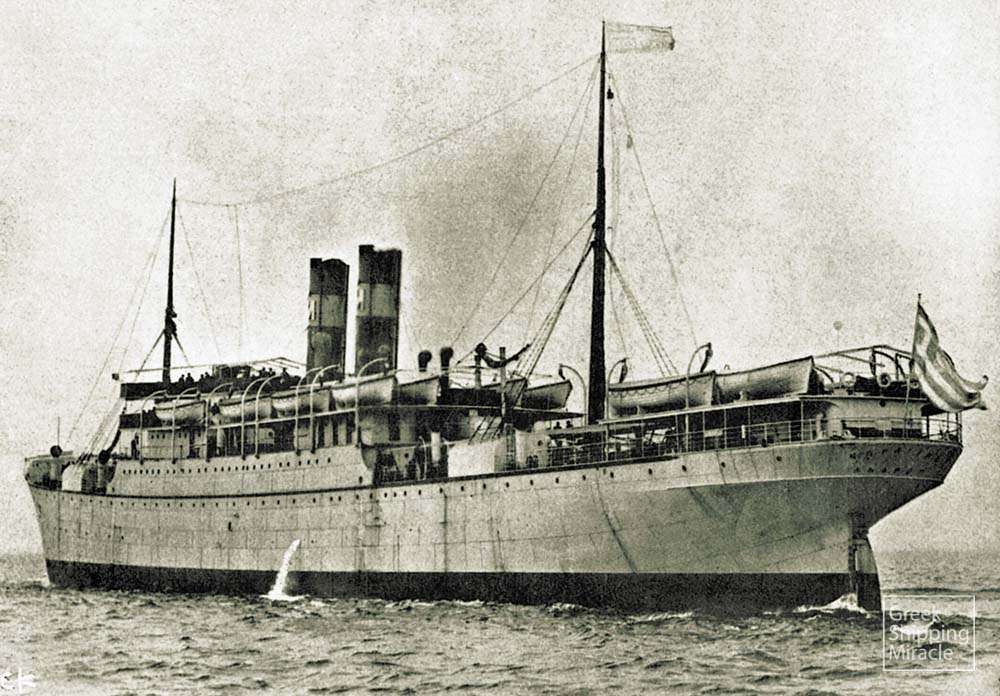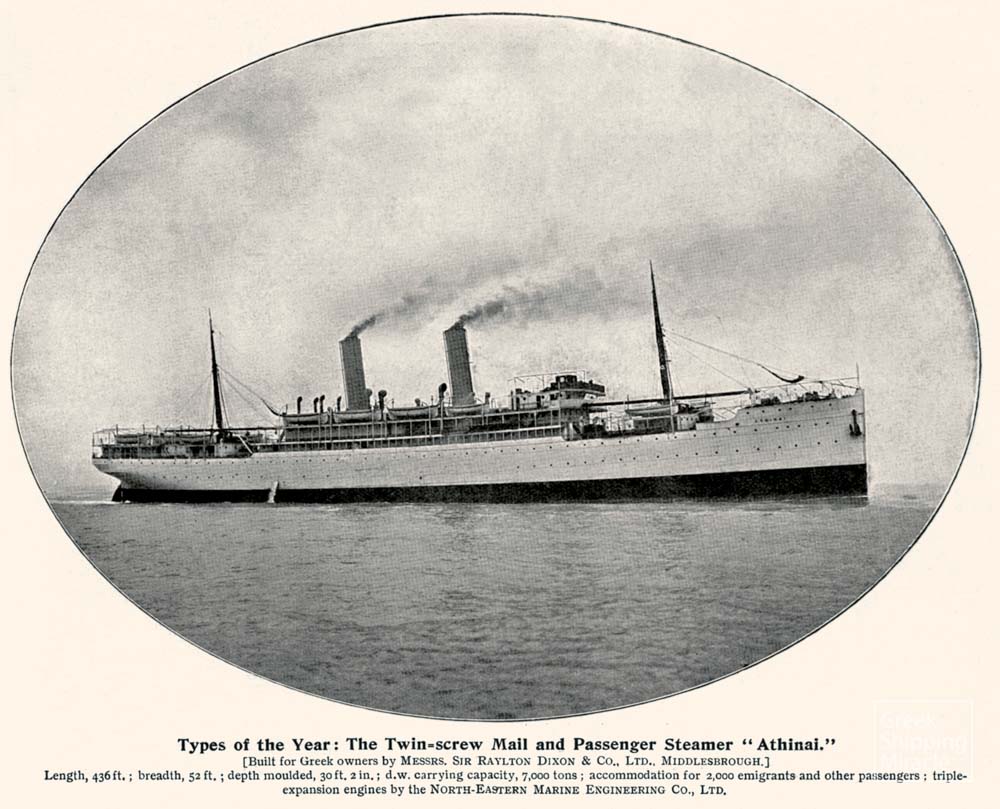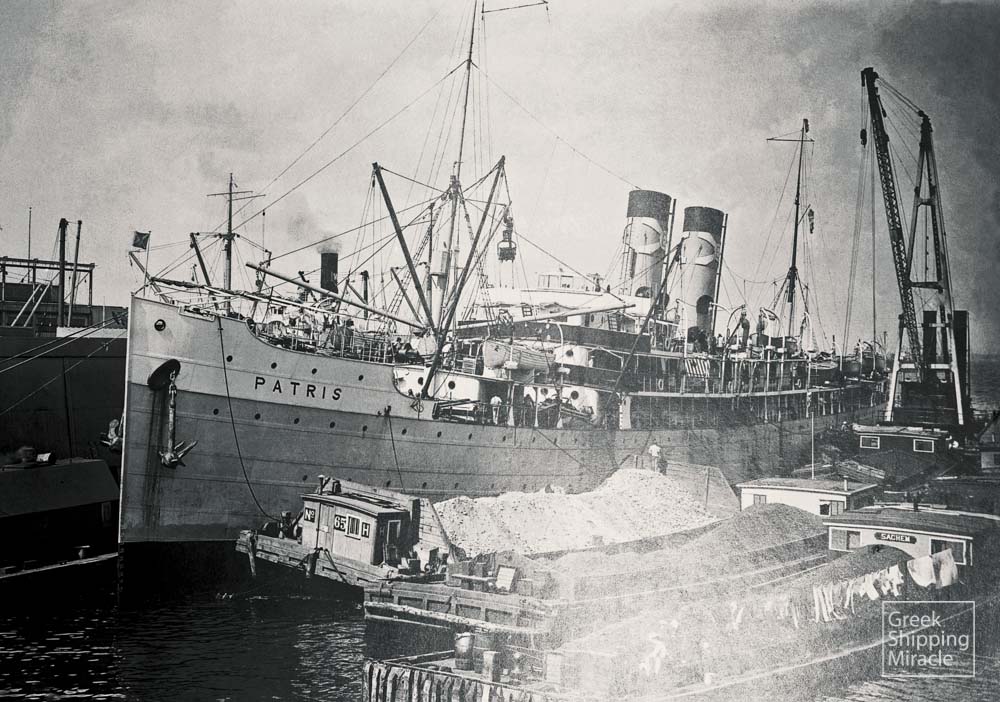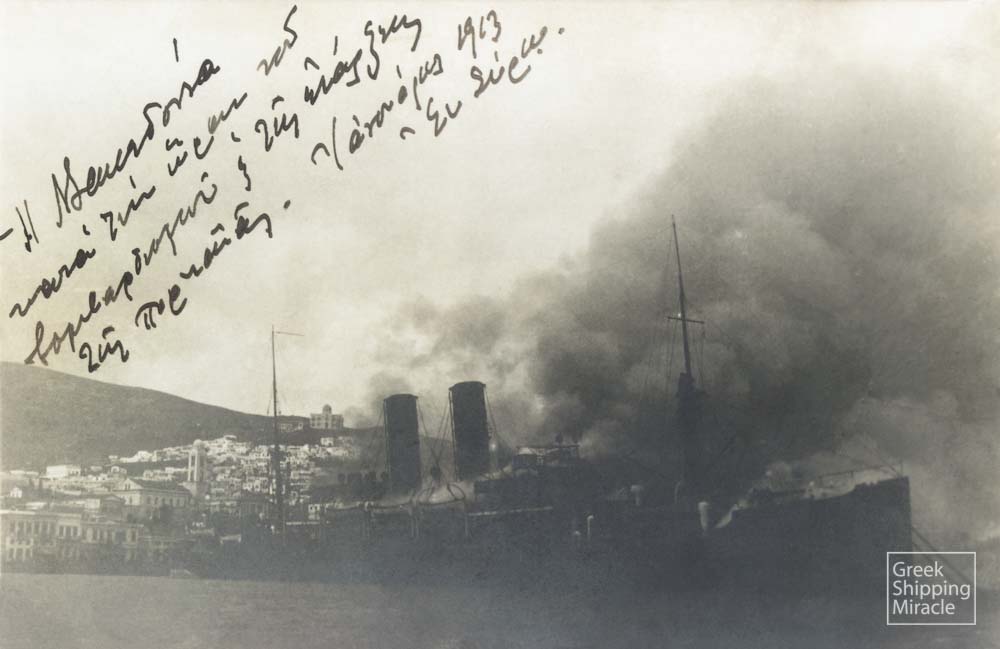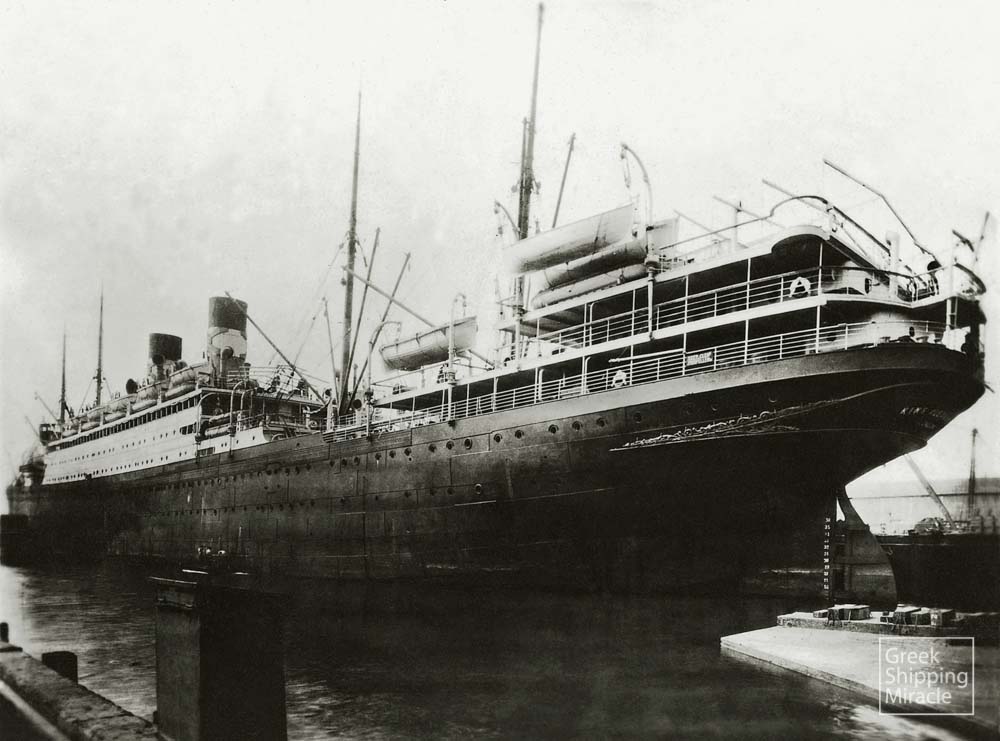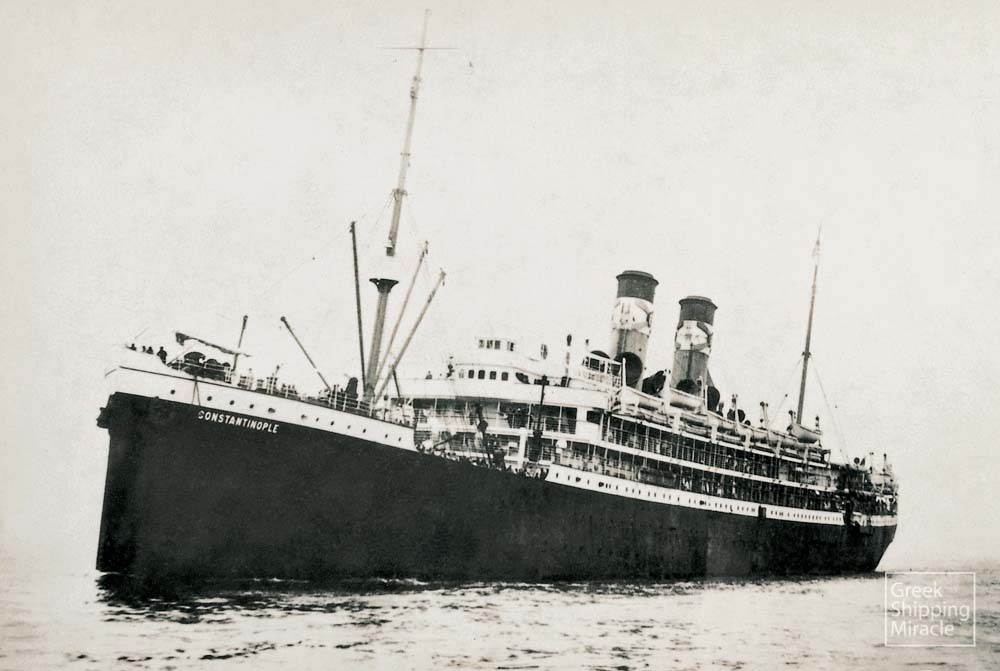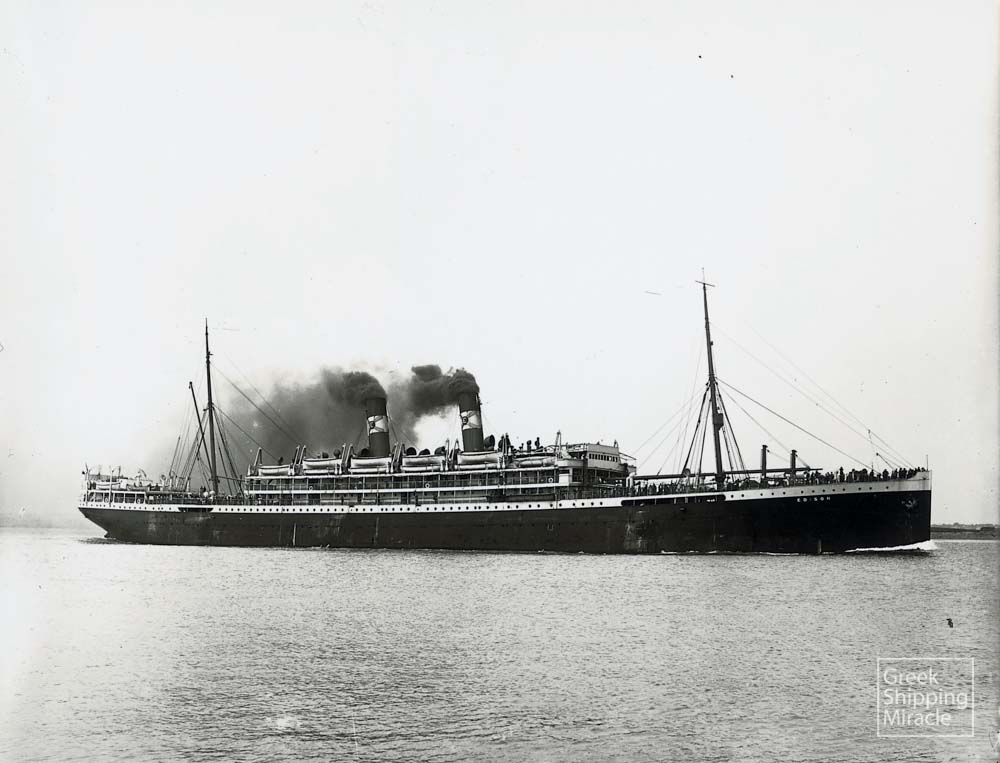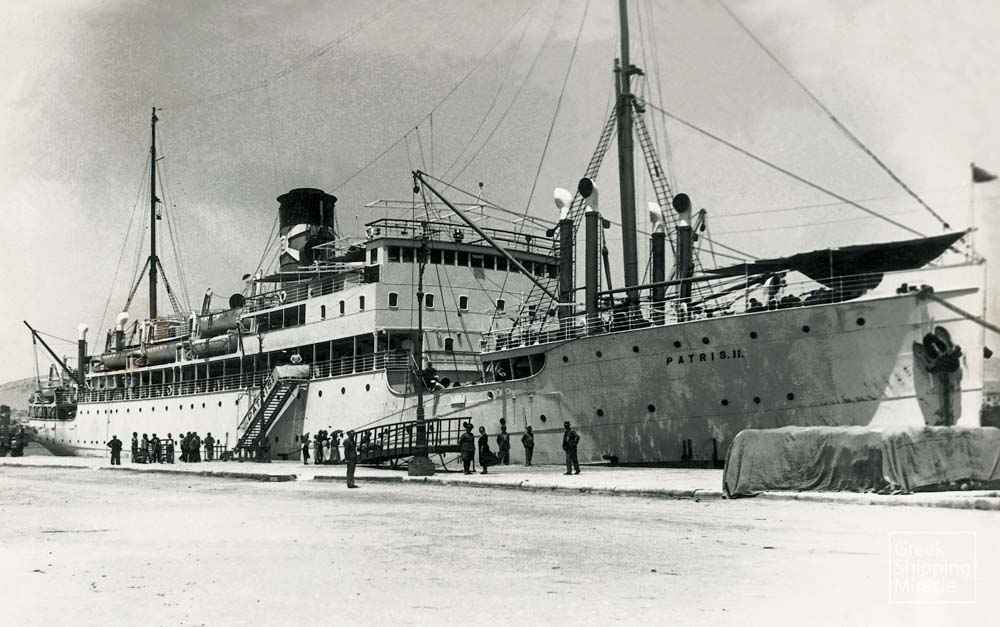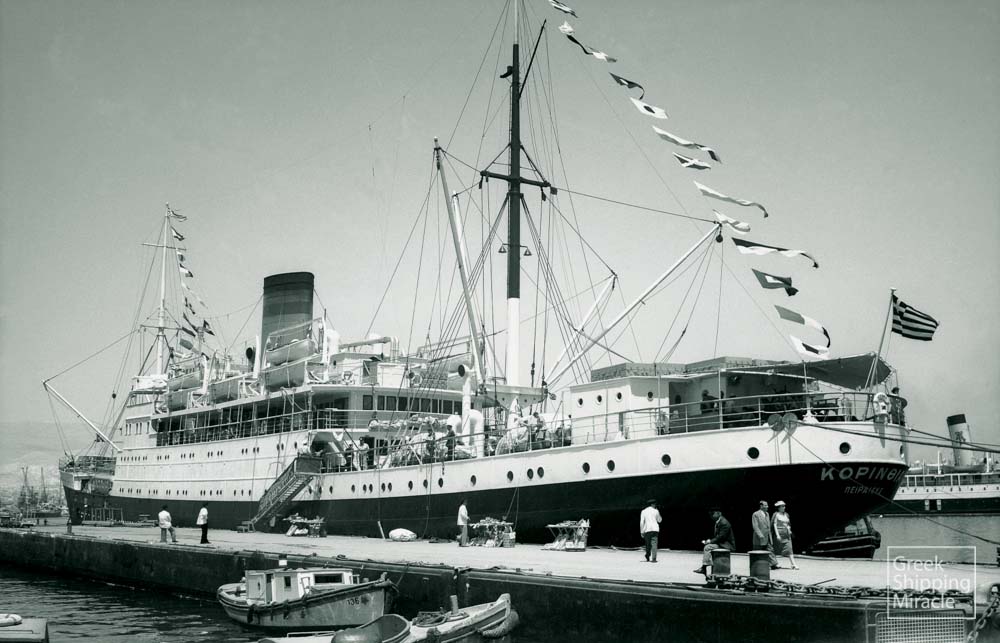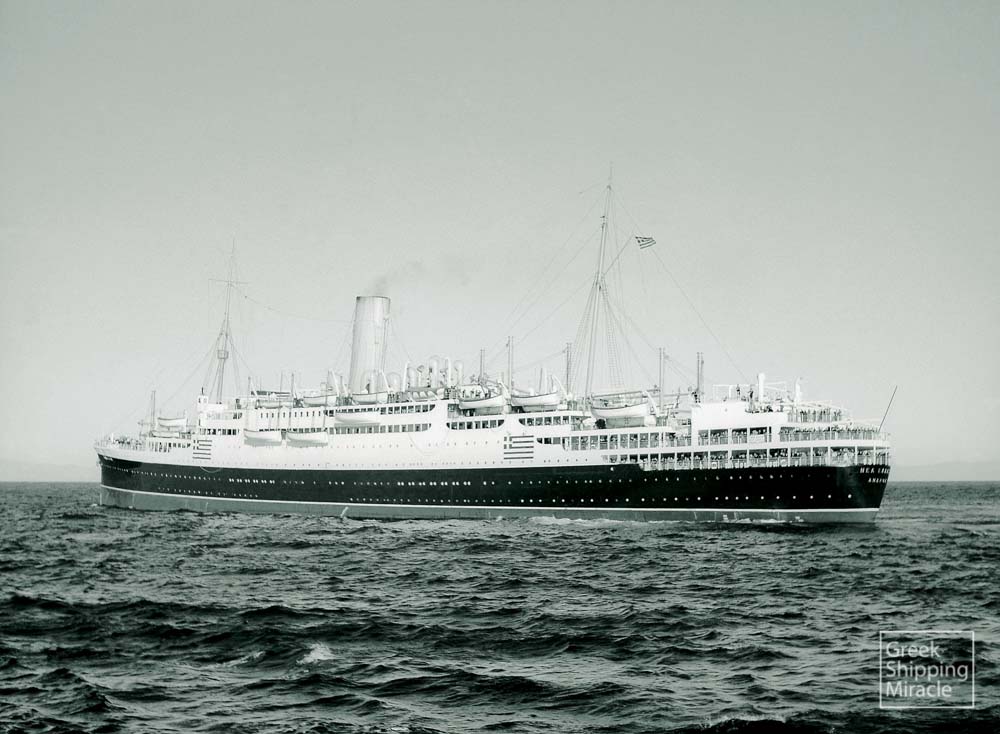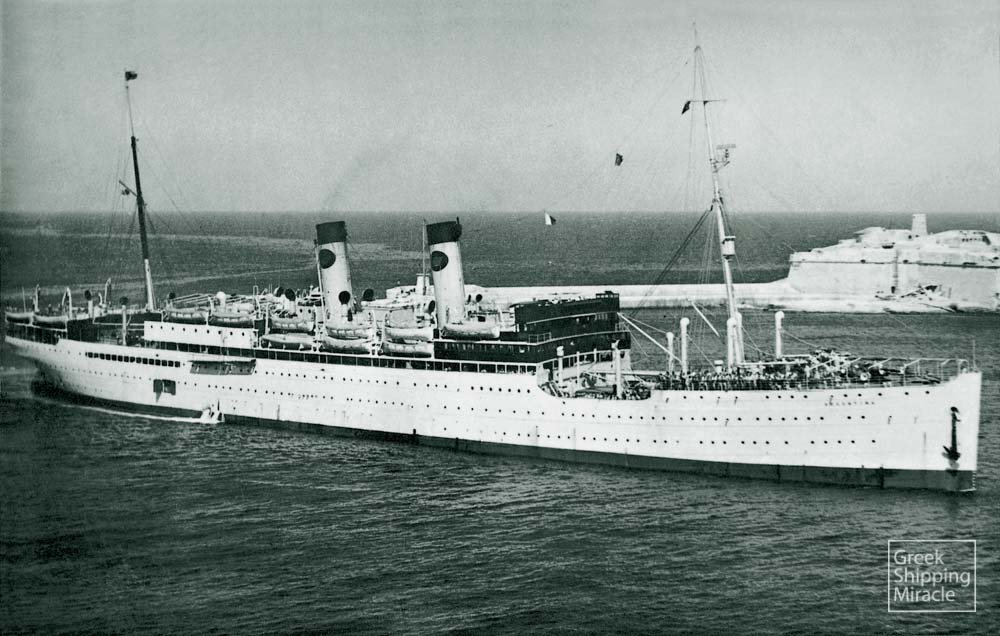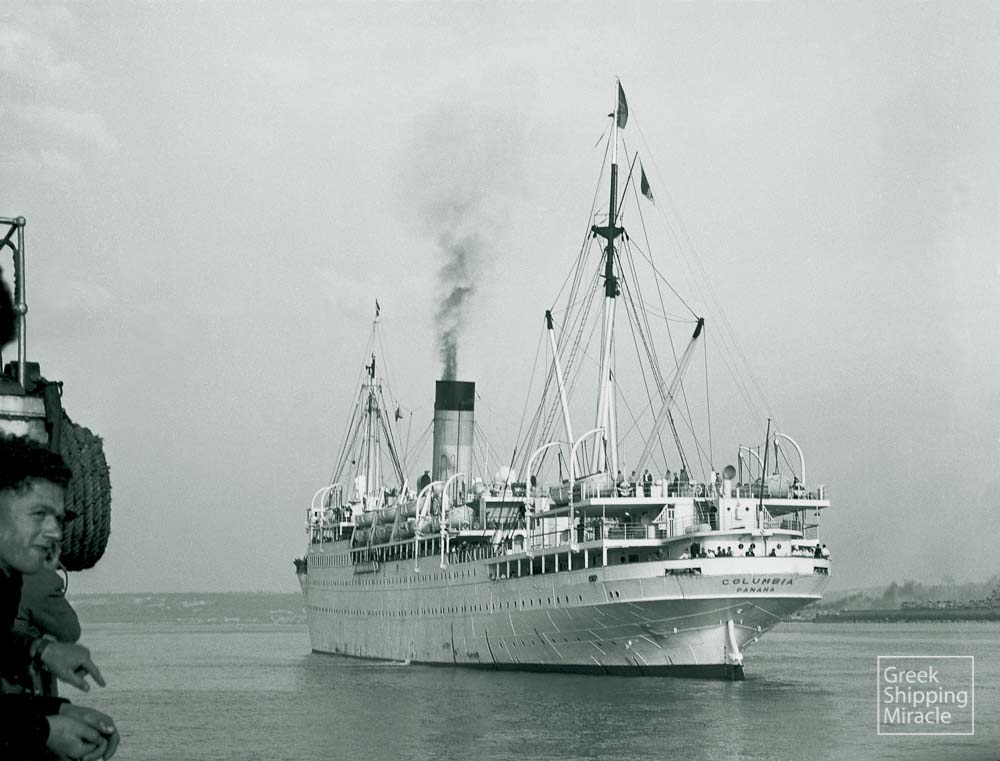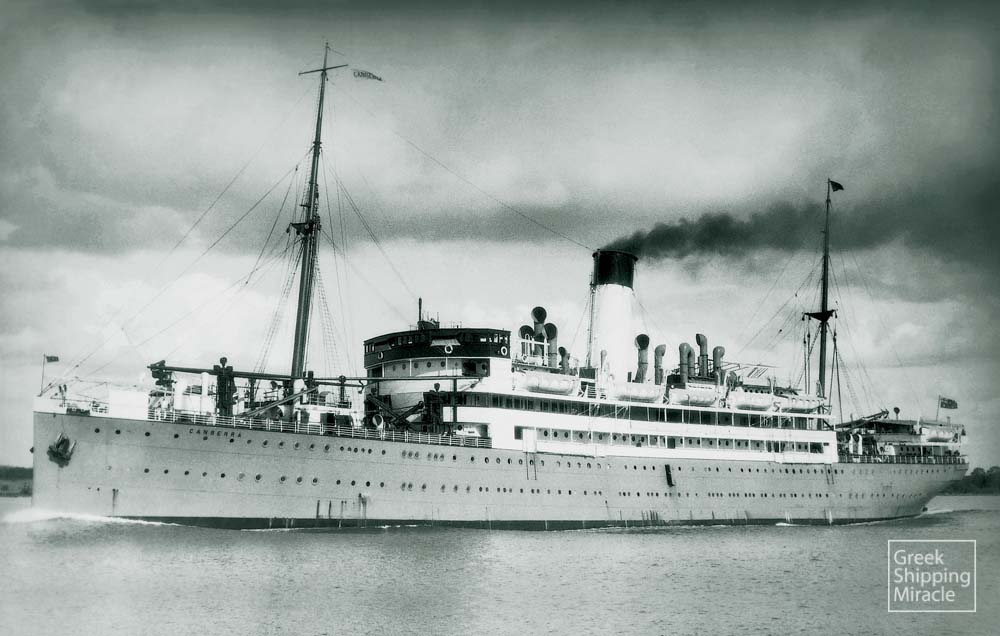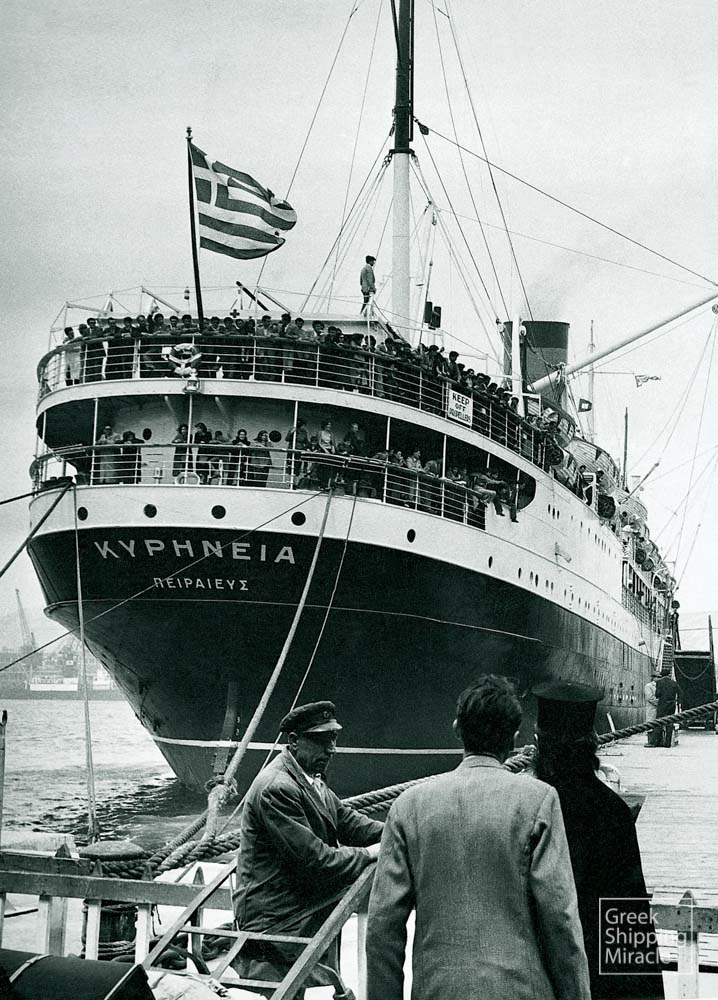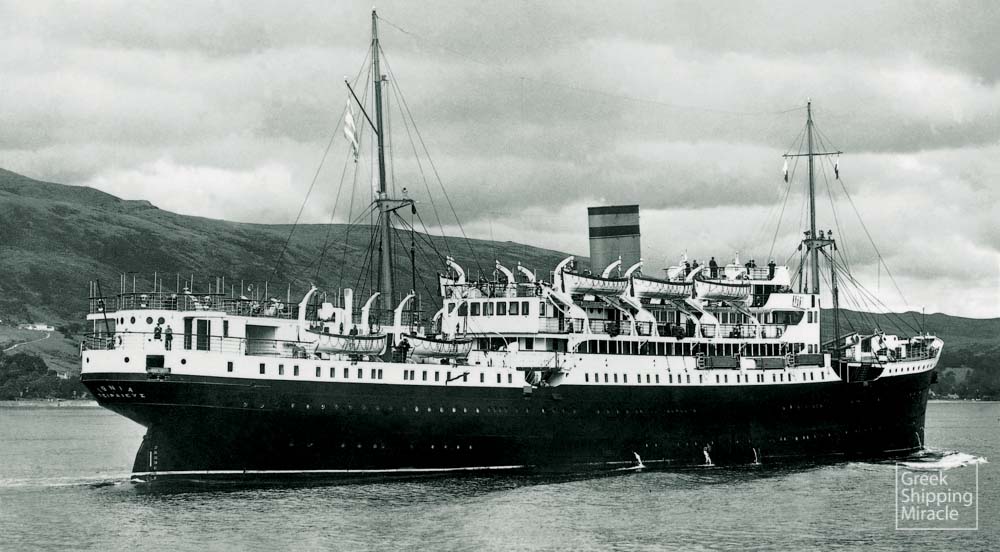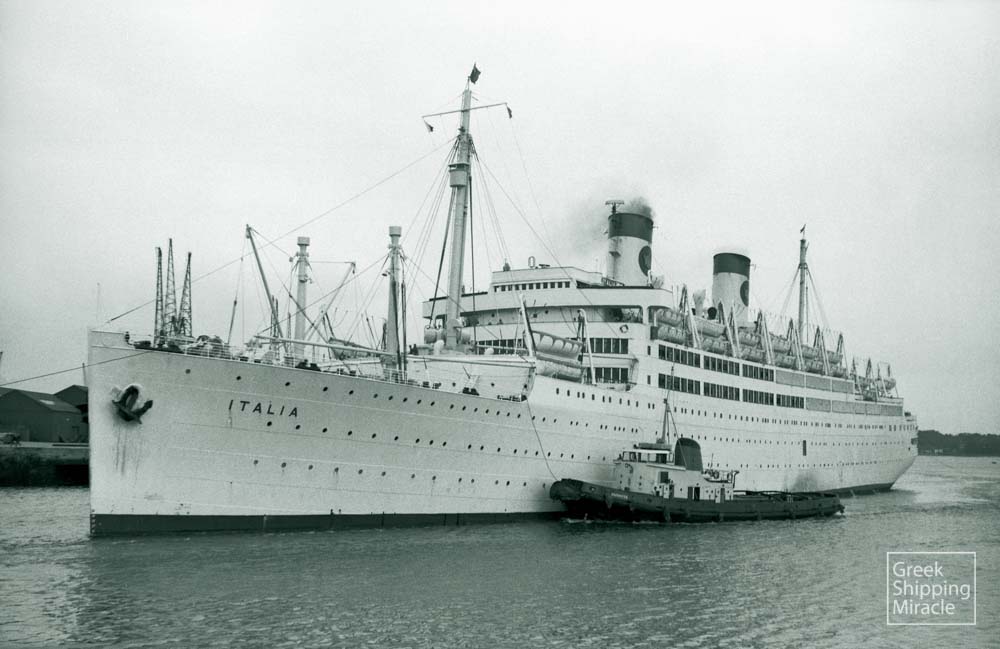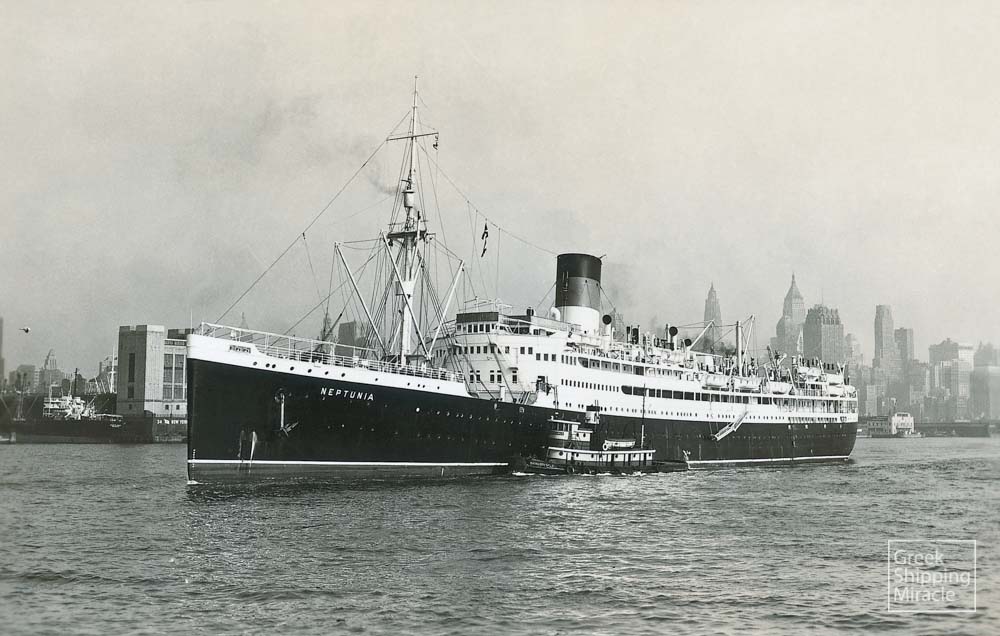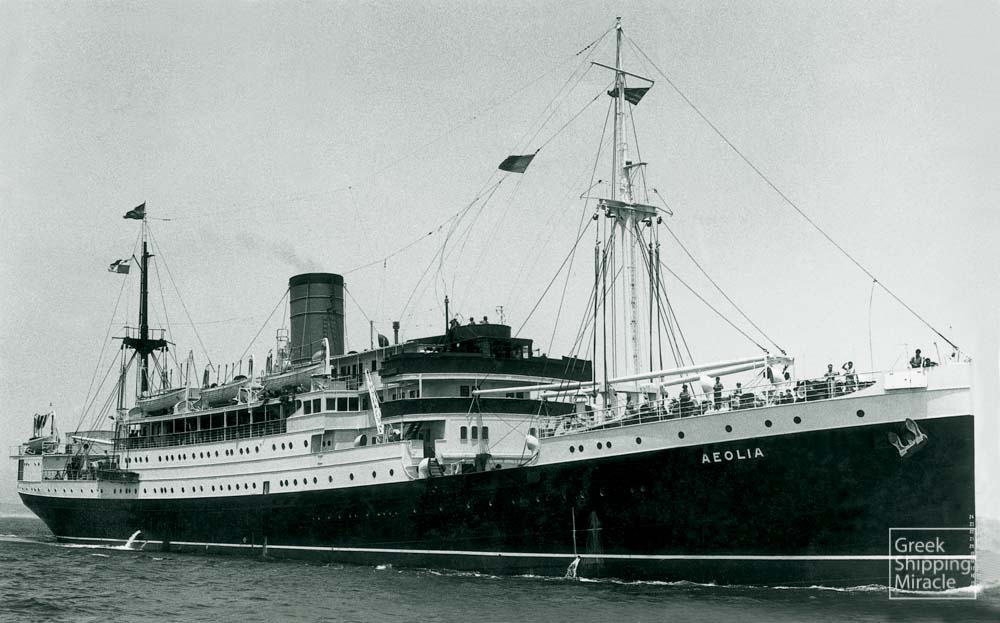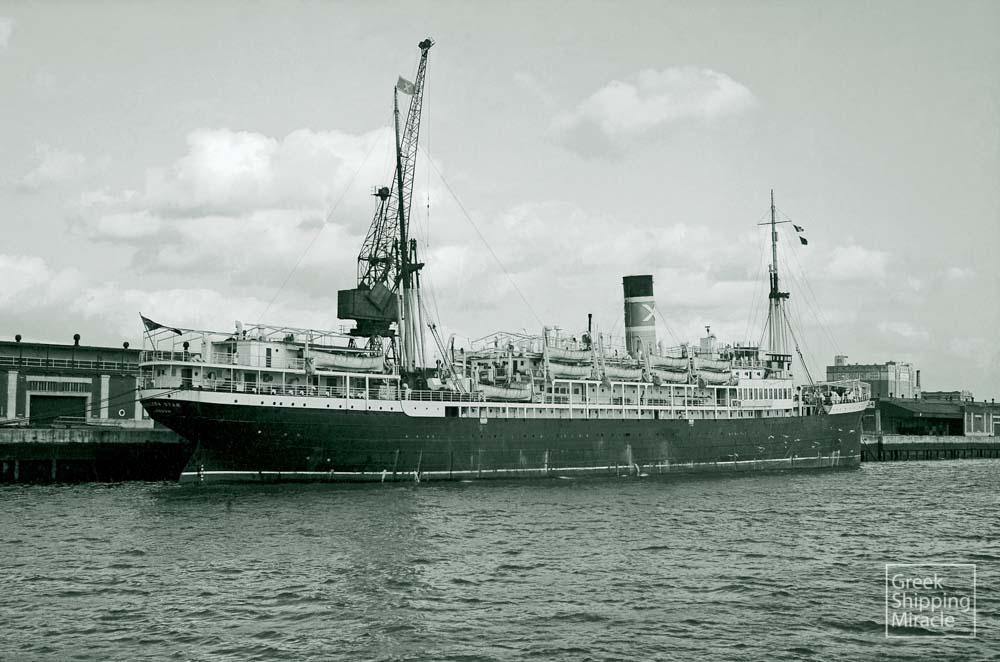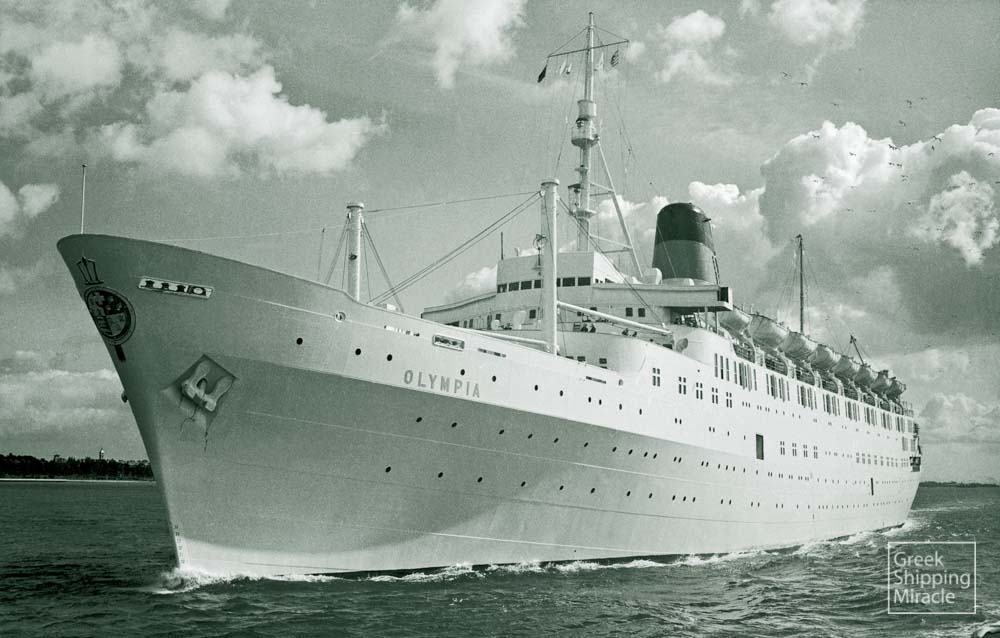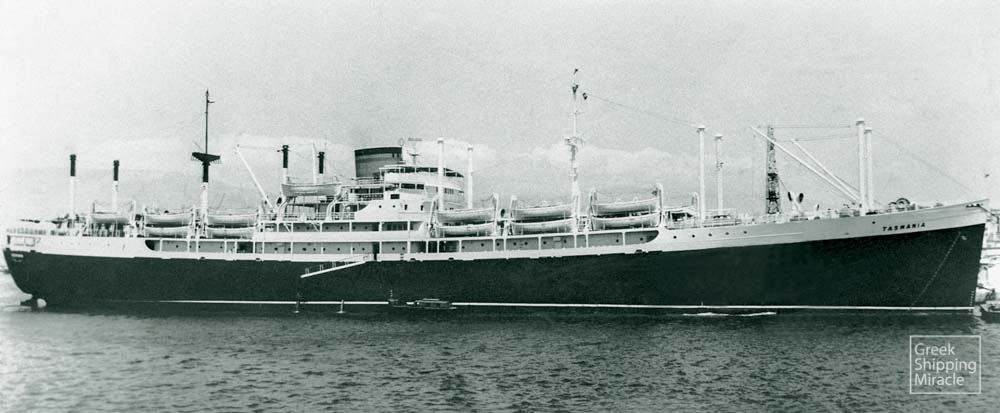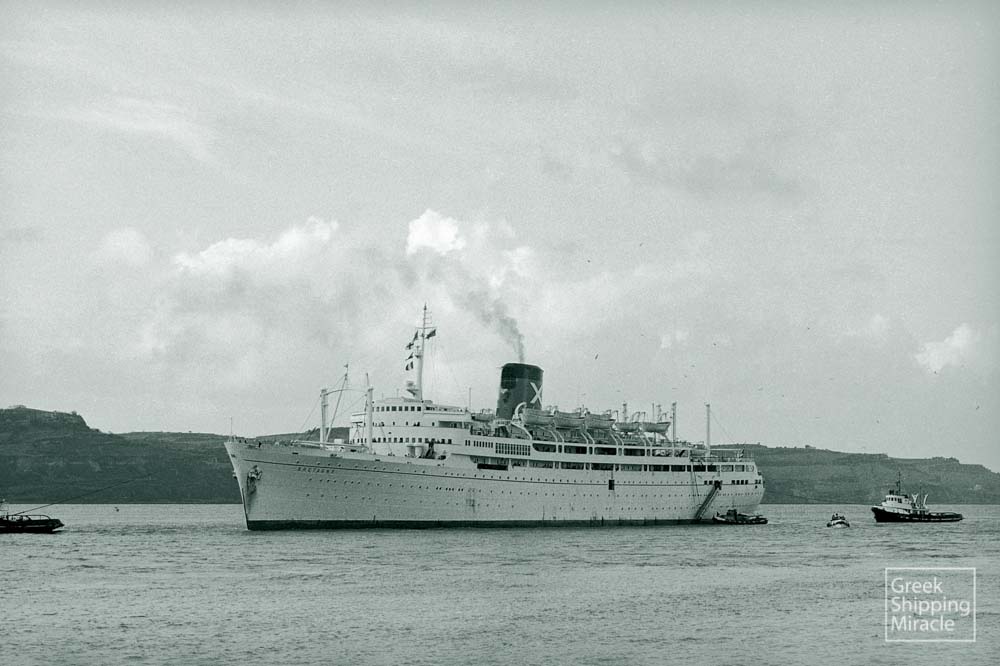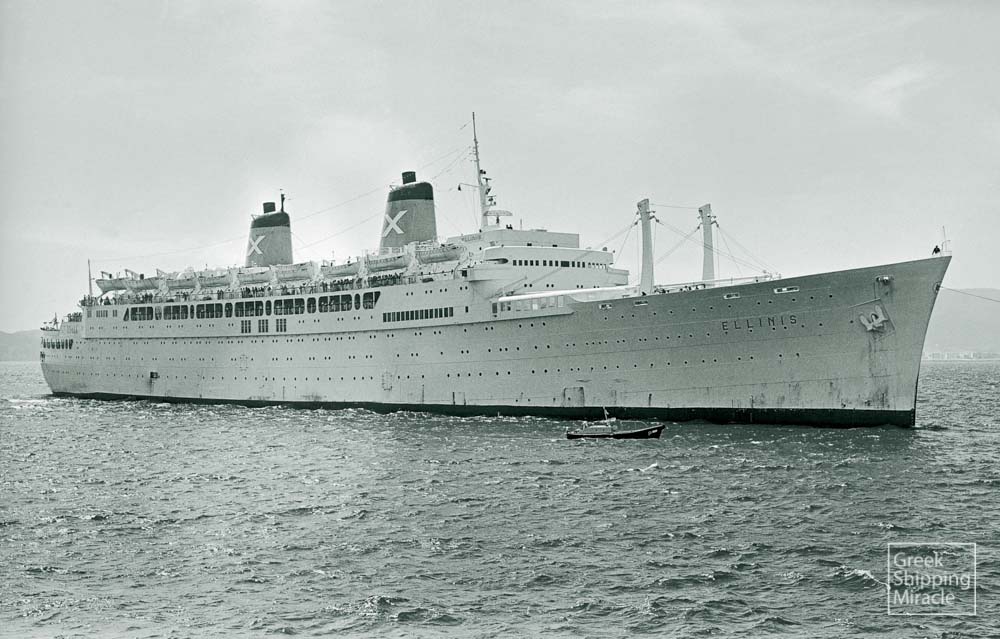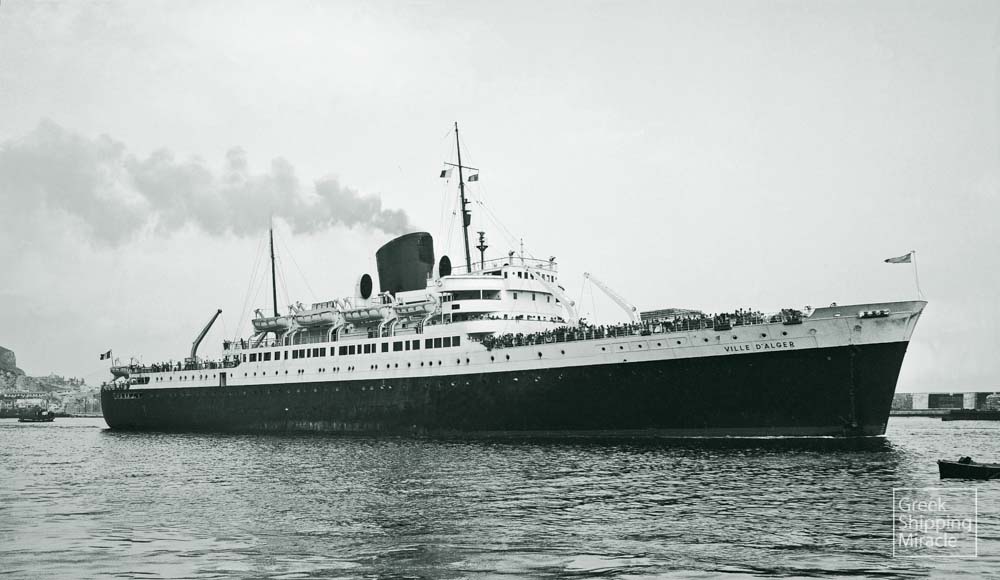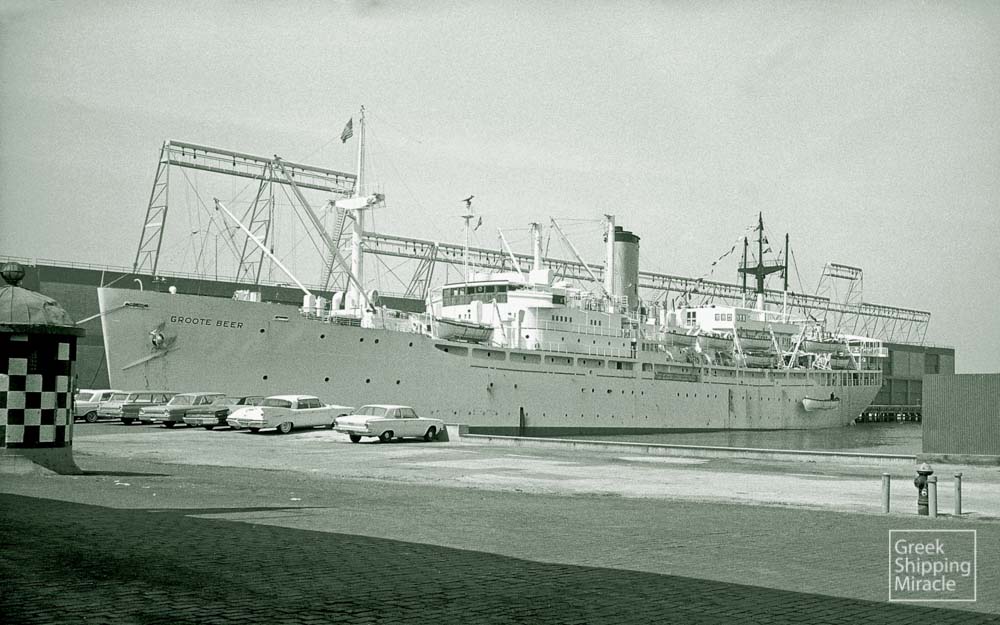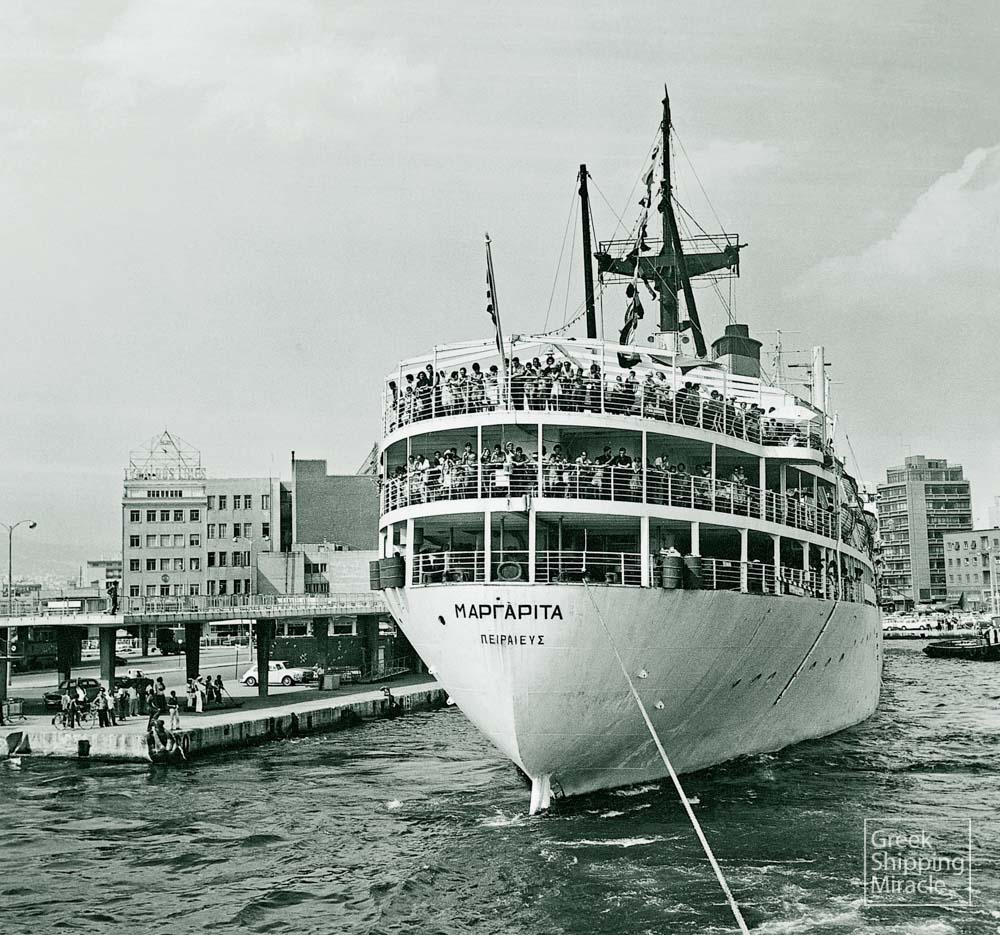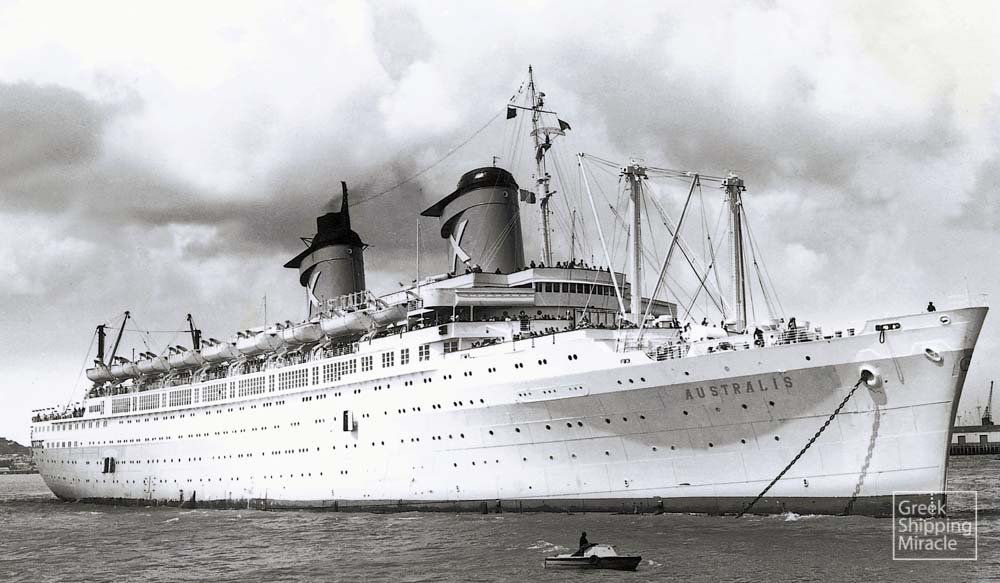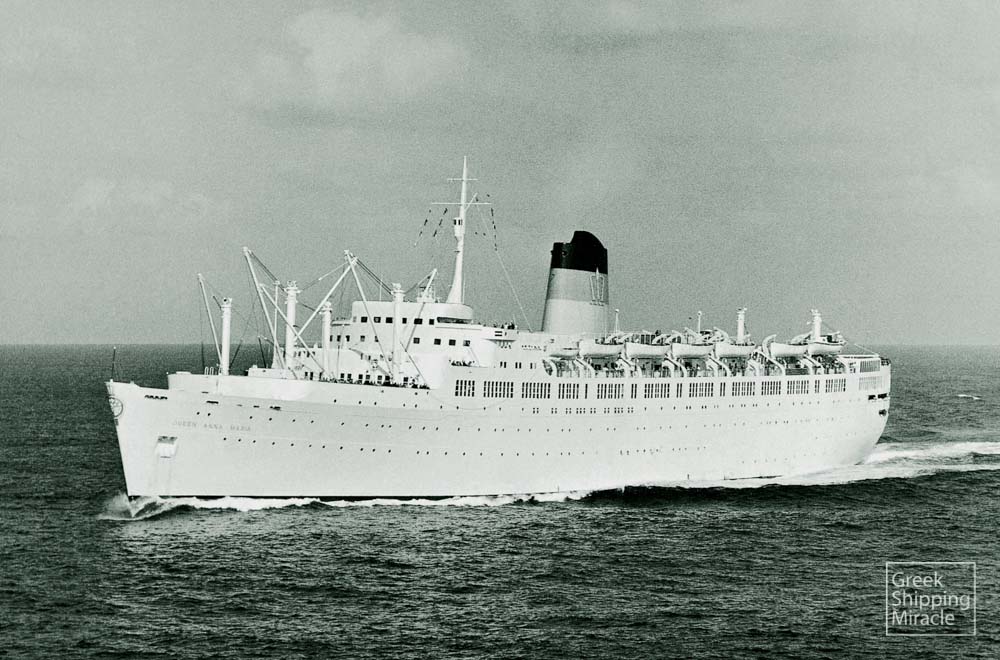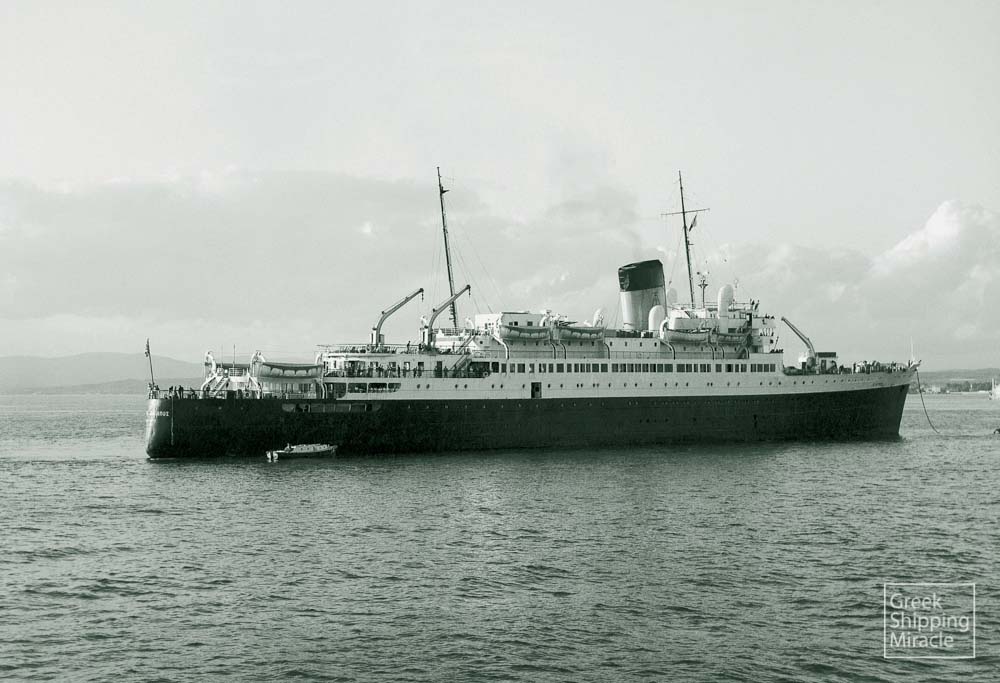OCEAN LINERS & CRUISE SHIPS
In the early 20th century, however, the foundations for the formation of a Greek ocean liner fleet began to be laid. It all started in 1907, with the delivery of the MORAITIS, a passenger ship built in the United Kingdom for Dimitrios Moraitis, a master mariner and shipowner from the island of Andros, who had already established himself in cargo shipping. As a response to the increasing migration flow from Greece to the United States, Moraitis ordered two large passenger ships from British shipyards.
But this initiative was ill fated. At the end of 1908, the company of Moraitis, which was facing an adverse economic climate and a reduction in immigration at the time, went bankrupt and management was transferred to its creditors. The restructured company also took over the second ship, the ATHINAI, but that scheme too proved to be short lived. Thus, the only Greek company that maintained a presence in international passenger shipping was the one of the Embiricos Brothers, the sons of Andreas Embiricos. As in the case of Moraitis, the Embiricos family hailed from Andros and was well established in cargo shipping. The National Steam Navigation Company of Greece, as the company was called, dominated the sector until the mid-1930s, when it run into financial trouble due to the failure of the Greek state to meet its contractual obligations towards it. This eventually led to the sale of National Steam Navigation’s assets and its dissolution.
From the mid-1920s to the outbreak of World War II, more Greek shipowners entered the sector, acquiring vessels that apart from servicing domestic itineraries made voyages to other nearby ports in the Mediterranean. Two notable cases were the Inglessis family from the island of Samos and the John Chandris family from Chios, whose descendants got involved after World War II both with cargo and international passenger shipping.
Shortly before the outbreak of World War II, the baton of transatlantic passenger service was passed to the Goulandris Brothers from Andros. They acquired the liner TUSCANIA from the British company Anchor Line, which was renamed NEA HELLAS, restoring the Greece-America service. Their involvement in the sector was enhanced after the War, with the establishment of the Greek Line, which played a key role in passenger shipping in the first two post-war decades.
After World War II, more Greeks became active in passenger shipping as a response to increased immigration to the United States and other regions, including South America and Australia. Apart from the Goulandris family, particularly active in the sector was the entrepreneur and benefactor Eugene Eugenides. His company, Home Lines, flourished for four decades thanks to the quality of its ships. In the late 1940s, Dimitrios and Anthony J. Chandris, the second generation of the Chandris family, entered passenger shipping by acquiring the British enterprise Charlton Steamship Co. Ltd. Among other leading players in passenger shipping was Hellenic Mediterranean Lines (ELMES), which had established Mediterranean itineraries shortly before the outbreak of the War with the passenger liner CORINTHIA.
At the time Greece was recovering from the adversities of World War II and the civil war that followed. The country was making its first steps into tourism, which led some Greek shipowners to focus their attention to maritime tourism. Spyros Typaldos from Cephalonia, dominated the sector until the late 1960s when the company he established with his brother Charalambos collapsed after the sinking of their ship HERAKLION, which resulted to a great loss of life. In the 1950s, the G. Potamianos family, who also hailed from the Ionian Sea and had a long maritime tradition entered tourist passenger shipping establishing Epirotiki Lines, which operated until the early 21st century.
In the late 1950s, entrepreneur John S. Latsis attempted to launch the Greece-Australia line by acquiring two Royal Mail Lines ships. Despite the fact that the project had progressed considerably, it was eventually shelved and the service was launched by the Chandris group in December 1959 with the ocean liner PATRIS, marking the beginning of a new era in the family’s involvement in passenger shipping. This setback led Latsis to shift his interest in the transport of pilgrims to Jeddah, utilising one of the two ships he had acquired, a choice that was a milestone in his subsequent career.
Another traditional cargo shipowner, Marcos P. Nomikos, focused on Mediterranean passenger services as well as coastal domestic routes. His company, Petros M. Nomikos Ltd., acquired from the Greek government five newly built passenger ships constructed in Italy in the early 1950s as part of World War II reparations. His activity in passenger shipping lasted about two decades.
In the mid-1960s, Charalambos Kioseoglou, a former executive of the Eugenides group, established the cruise company Sun Line, which operated successfully for about twenty years. In the next decade, another former Eugenides executive, Pericles Panagopulos, launched the Royal Cruise Line, which quickly gained international recognition and was sold to Norwegian interests in 1989.
In the early 1970s, two distinguished shipowners, John C. Carras and Aristomenis M. Karageorgis, acquired a number of second-hand liner cargo ships and had them converted into passenger vessels. After extensive reconstruction works in Greece, these vessels operated, as cruise ships for Carras and as ro/ro passenger ferries linking Greece and Italy for Karageorgis. None of the two ventures was successful and adversely affected the cargo shipping operations of both shipowners, particularly Karageorgis’s.
The end of Greek mass immigration, coupled with the rapid growth of the aviation industry, brought the end of ocean liner services to the United States and Australia. At the same time, Greek participation in international cruises began to decline, mainly due to protectionist policies adopted by the Greek government, which in the long run weakened the sector. Thus, new players began to emerge in the world cruise market, such as Carnival Corporation, which began its long journey in the mid-1970s with the acquisition of a laid up Greek Line vessel, the QUEEN ANNA MARIA, and Greek technical support.
The last noteworthy involvement of Greek entrepreneurs in the cruise industry was by the Chandris group, whose subsidiary Celebrity Cruises placed in Germany in the late 1980s orders for the construction of high-specification cruise ships. The first ship, the HORIZON, was delivered in 1990, but in 1997, before the fifth vessel of the series had been delivered, the group’s management decided to transfer the company’s majority stake to Royal Caribbean International, the world’s second largest cruise ship company. This move ensured the survival and further growth of the company in an increasingly competitive environment. Another cruise company of Greek interests that like Celebrity Cruises had taken delivery of newly-built ships, Festival Cruises of the George Poulides group, missed the opportunity to join the arm of the British group P&O. In 2004, it declared bankruptcy, a victim of a major crisis in the cruise industry following the 9/11 terrorist attacks in the United States.
This section showcases the ocean liners that operated on regular routes from Greece, as well as cruise ships of Greek interests that were active from the first decade of the 20th century until the early 21st century.
